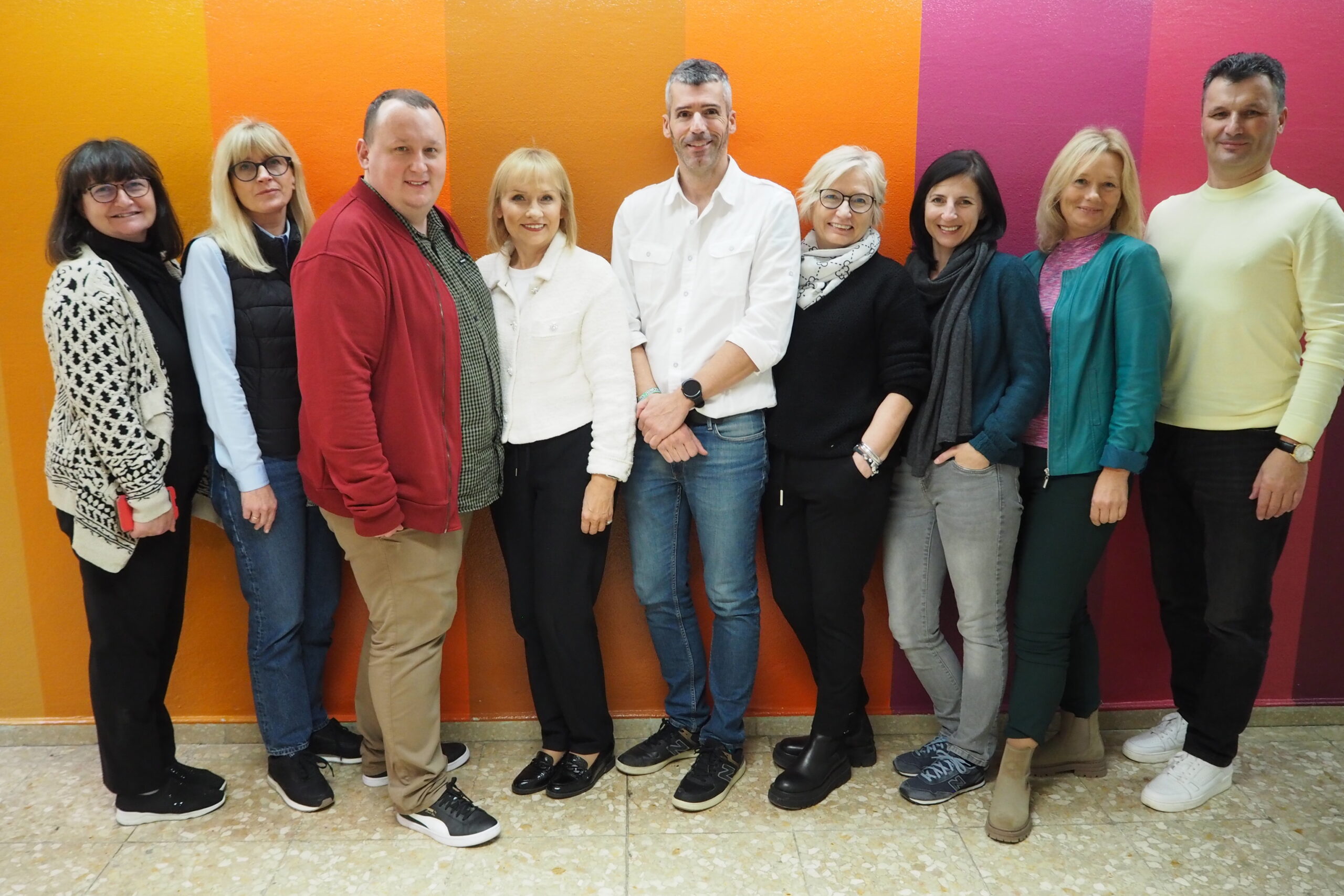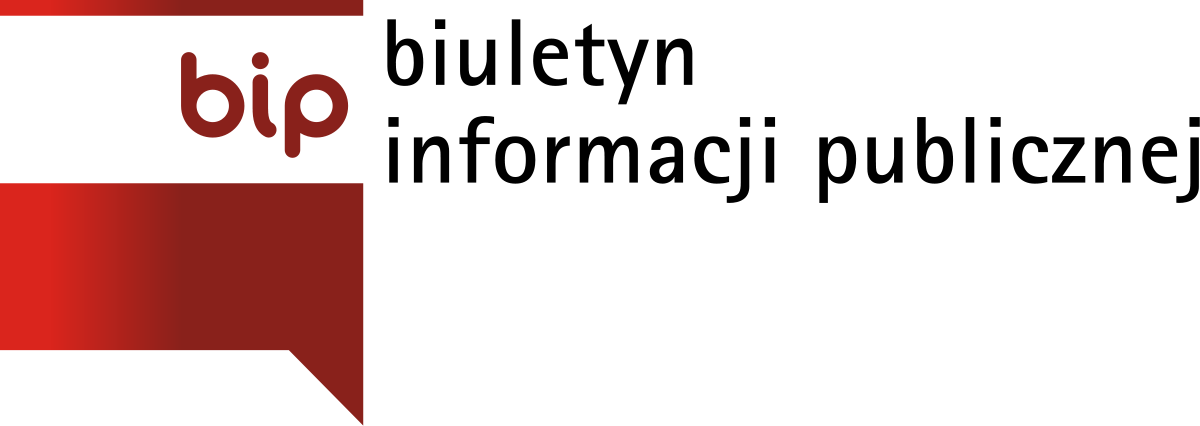
Rozpoczęliśmy drugą fazę projektu – mobilności edukacyjne. Pierwsza z trzech zaplanowanych w projekcie wizyt miała miejsce w Huesce, w Aragonii. Ośmioosobowy zespół z MSCDN spotkał się po raz pierwszy na żywo z partnerami z Hiszpanii i Niemiec. Bogaty program wizyty pozwolił na wymianę doświadczeń i wspólne uczenie się w obszarze organizowania wsparcia dla nauczycieli i dyrektorów, przyjrzenie się pracy nauczycieli i poznanie projektów realizowanych w różnych typach placówek edukacyjnych. Uczestnicy mieli również okazję zanurzyć się w języku i kulturze kraju goszczącego, zwiedzając zabytki, poznając lokalną kuchnię, tradycje oraz historię miasta i regionu. Uczestnictwo w ćwiczeniach warsztatowych “Krok do przodu” oraz z wykorzystaniem metod uczenia się we współpracy były okazją do rozmów i dyskusji w gronie wszystkich uczestników, sprzyjały rozwijaniu umiejętności komunikowania się w języku angielskim.
Dzień 1
Zostaliśmy oficjalnie powitani przez dyrektora Centro de Profesorado de Huesca “Ana Abarca de Bolea” https://cifeaab.catedu.es/. Poznaliśmy strukturę organizacyjną placówki, pracowników i budynek, w którym mieści się instytucja. Pomimo drobnych trudności komunikacyjnych atmosfera była pełna entuzjazmu i gotowości do współpracy.


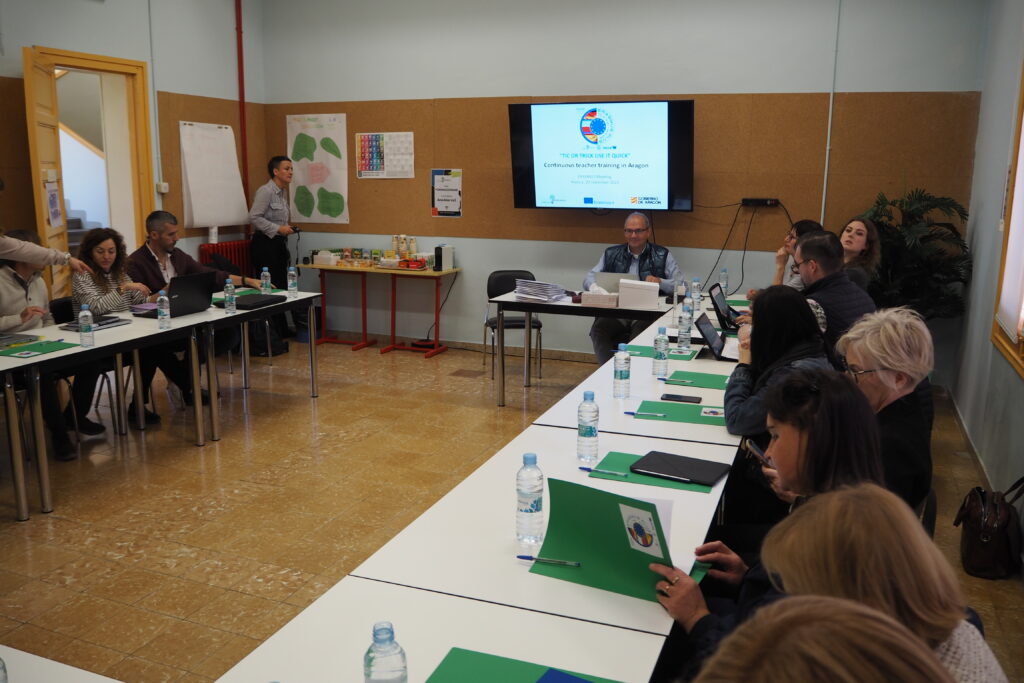
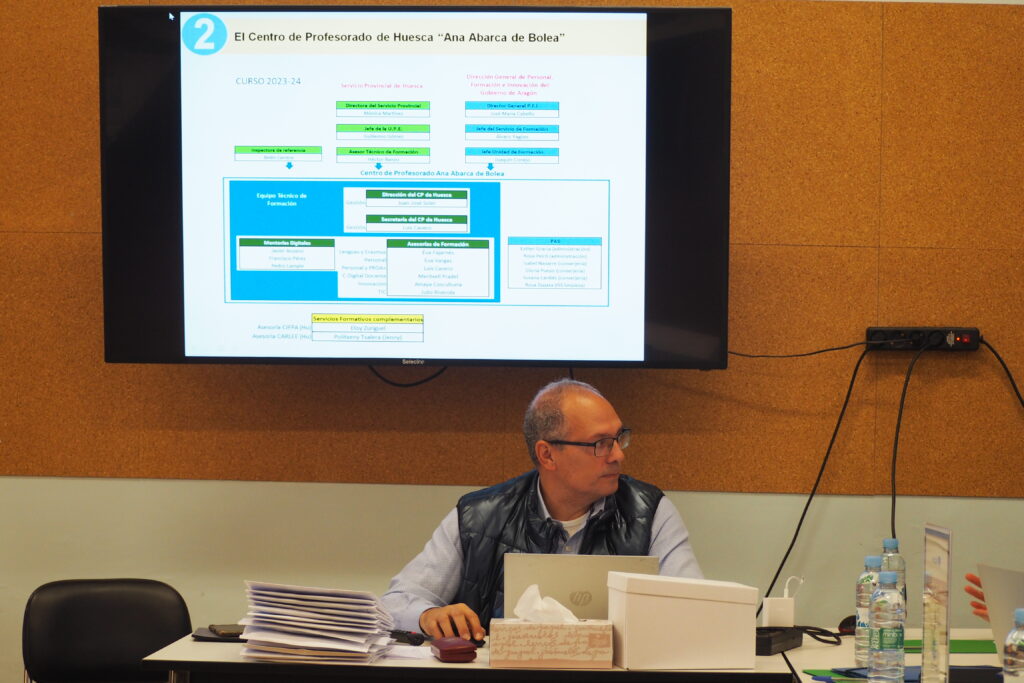

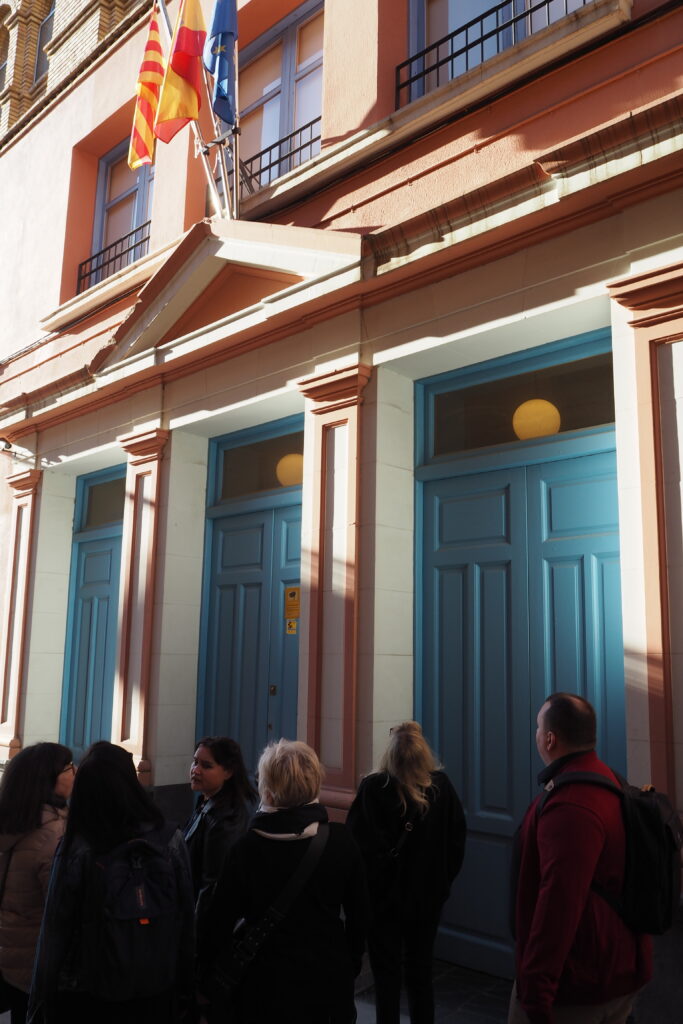

Podczas warsztatów przygotowanych przez przedstawicieli instytucji partnerskiej z Niemiec AGSA https://www.agsa.de/aktuelles.html poznaliśmy techniki pracy sprzyjające rozwojowi kompetencji międzykulturowych.

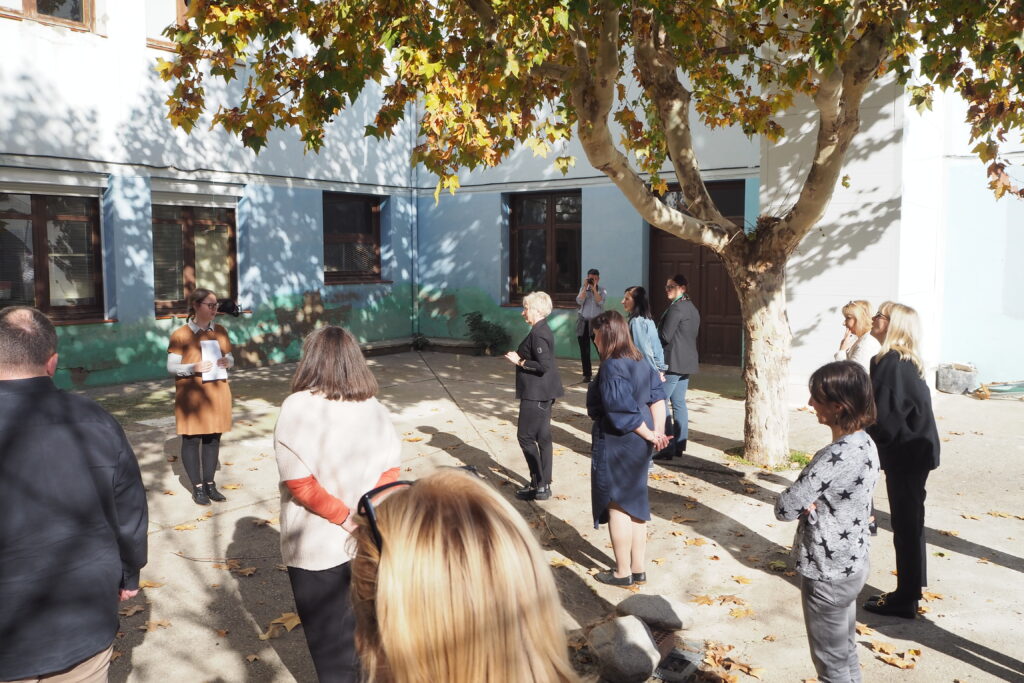


Poznaliśmy CARLEE (Centro Aragonés de Lenguas Extranjeras para la Educación) https://www.carleearagon.es/ i omówiliśmy możliwości współpracy między naszymi instytucjami w zakresie wspierania nauczycieli języków obcych.


Uczestniczyliśmy w warsztatach poświęconych metodom aktywizującym, w szczególności wspierającym uczenie się we współpracy, i nowym technologiom w edukacji.



Dzień 2
Kolejnego dnia mieliśmy okazję odwiedzić lokalne placówki edukacyjne.
Dyrektor CEIP Alcoraz https://colegioalcoraz.wixsite.com/inicio przedstawił nam realizowane w szkole projekty STEAM oraz pokazał przestrzenie (Aula de las estrellas), w których specjaliści pracują z uczniami z zaburzeniami ze spektrum autyzmu.






Następnie zwiedziliśmy placówkę kształcenia zawodowego El Instituto de Educación Secundaria Pirámide http://www.iespiramide.es/, która, poza przygotowaniem uczniów do egzaminu maturalnego i zawodowego, realizuje program kształcenia zawodowego specjalnego.



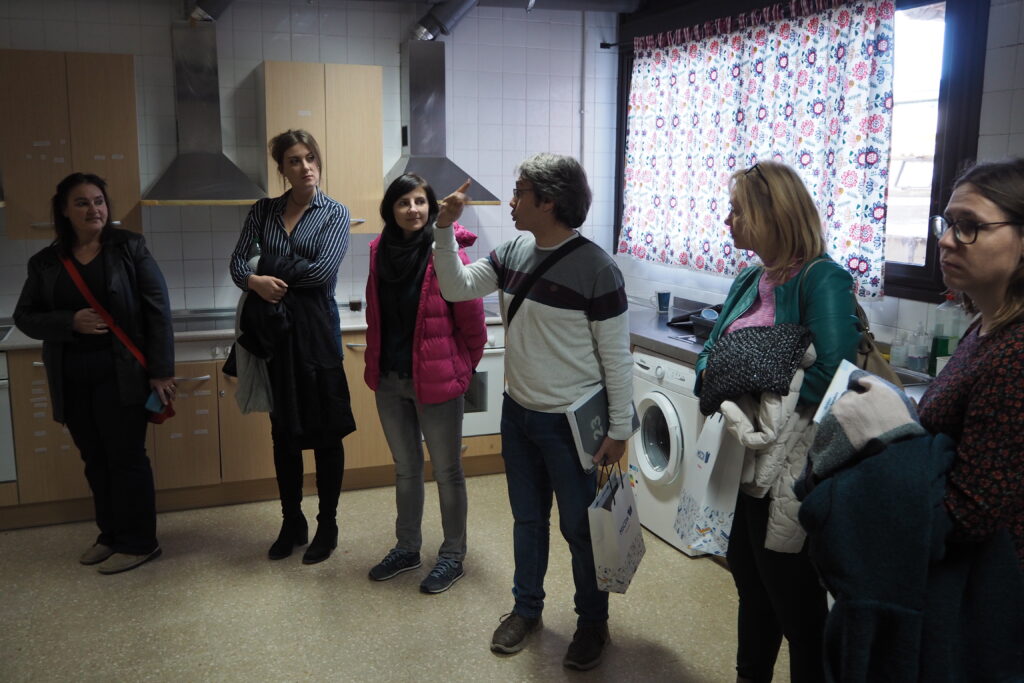
W mieszczącej się obok La Escuela Politécnica Superior de Huesca https://eps.unizar.es/ mieliśmy okazję zwiedzić bibliotekę z widokiem na góry i wyjątkową kolekcją nasion do wypożyczenia. Wszyscy wyjechaliśmy z torebką nasion lokalnej odmiany bazylii.

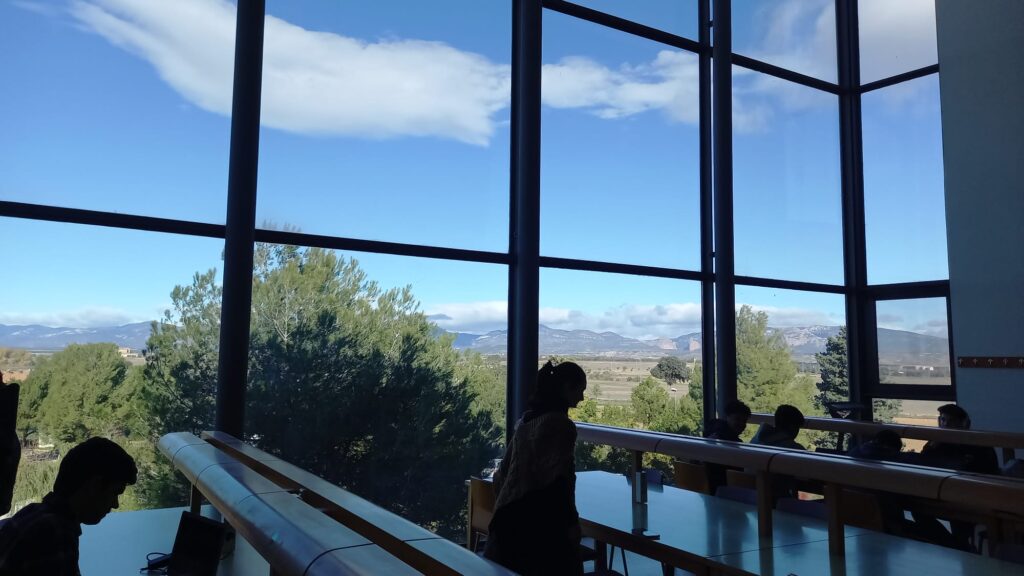
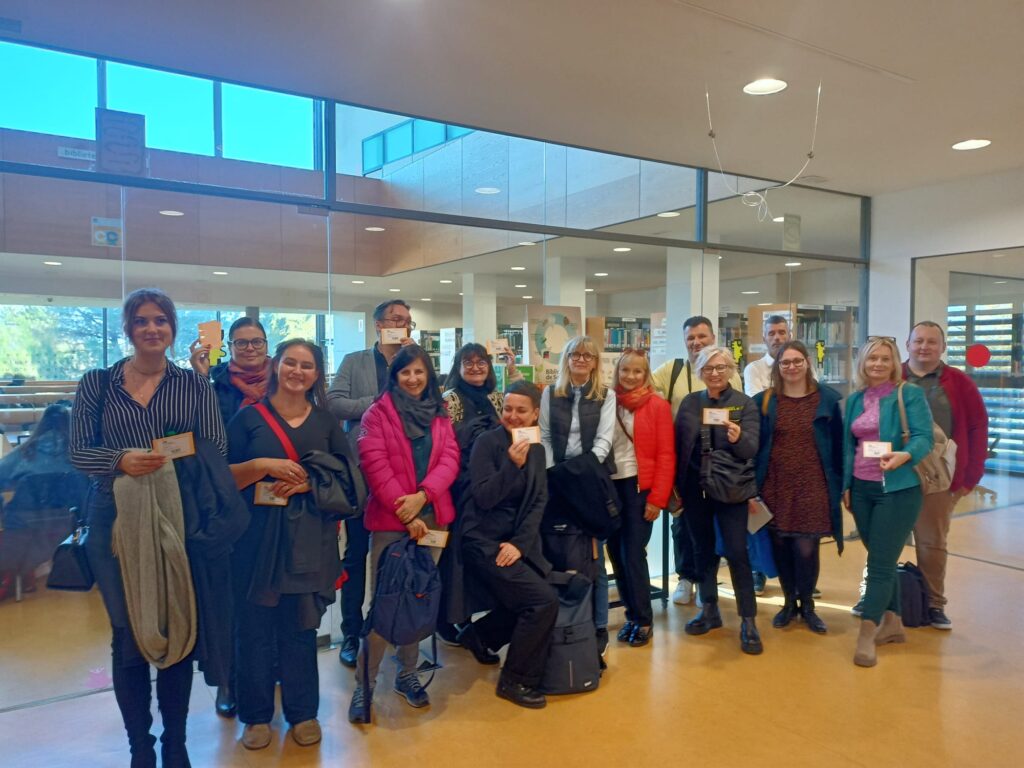
Po południu zwiedziliśmy Huescę z przewodnikiem. Poznaliśmy jej najważniejsze zabytki, historię, tradycje i związaną z nią legendę.
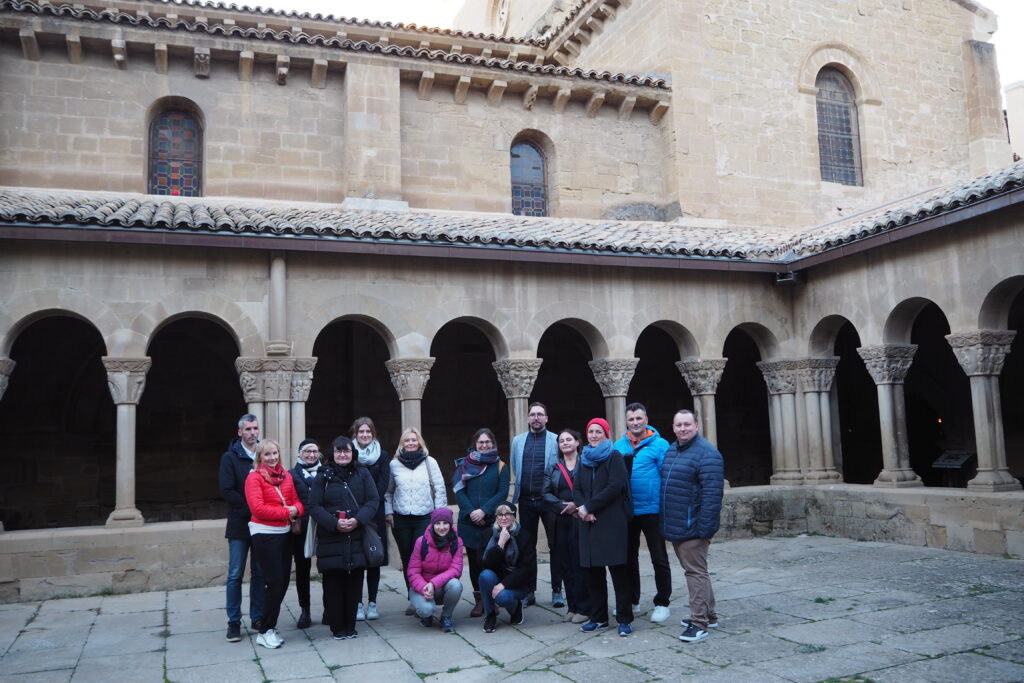
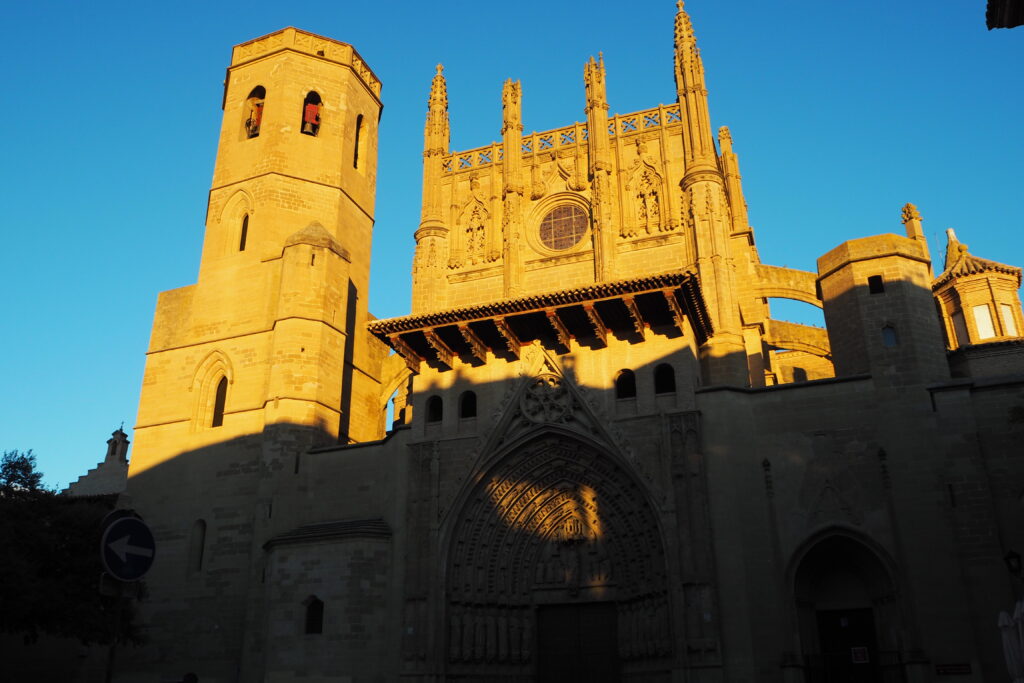
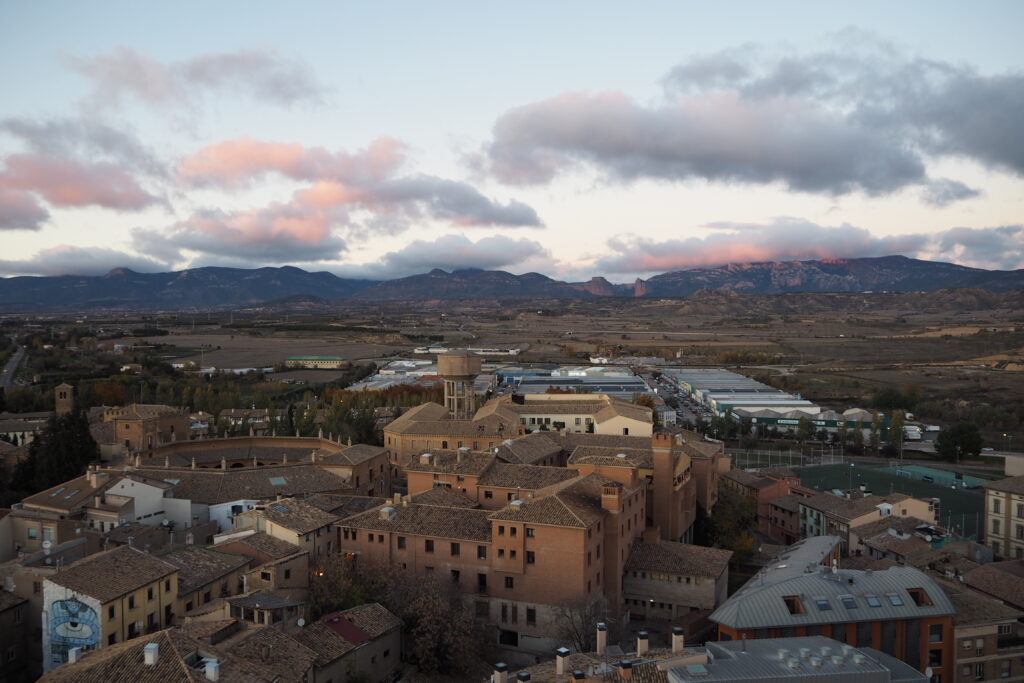
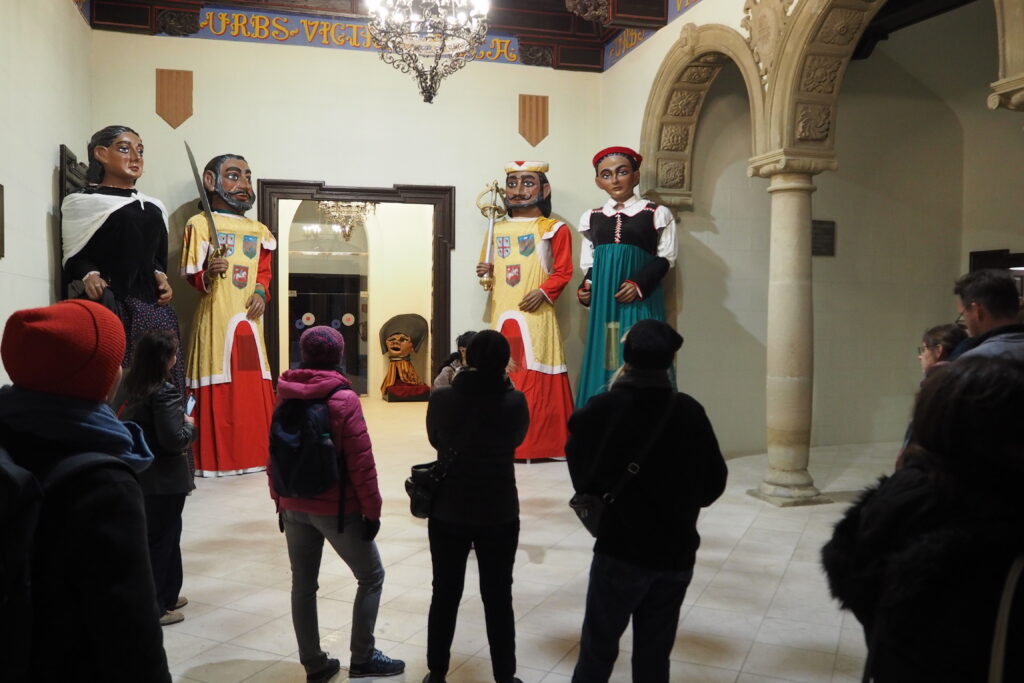
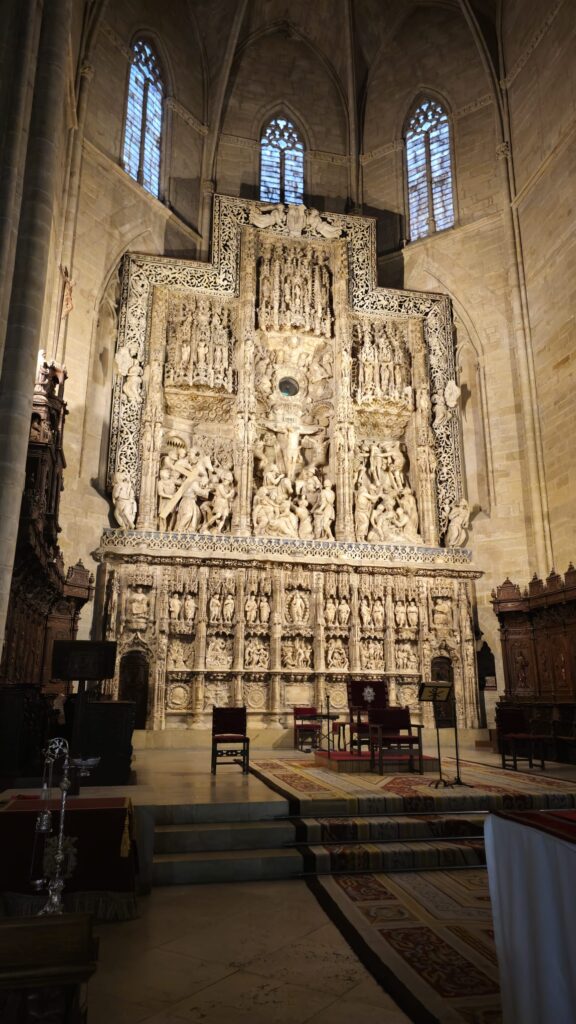
Dzień 3
Kolejny dzień zaczął się od wizyty w Ayerbe, rodzinnym miasteczku Santiago Ramón y Cajal, laureata Nagrody Nobla w dziedzinie medycyny za badania nad strukturą systemu nerwowego.
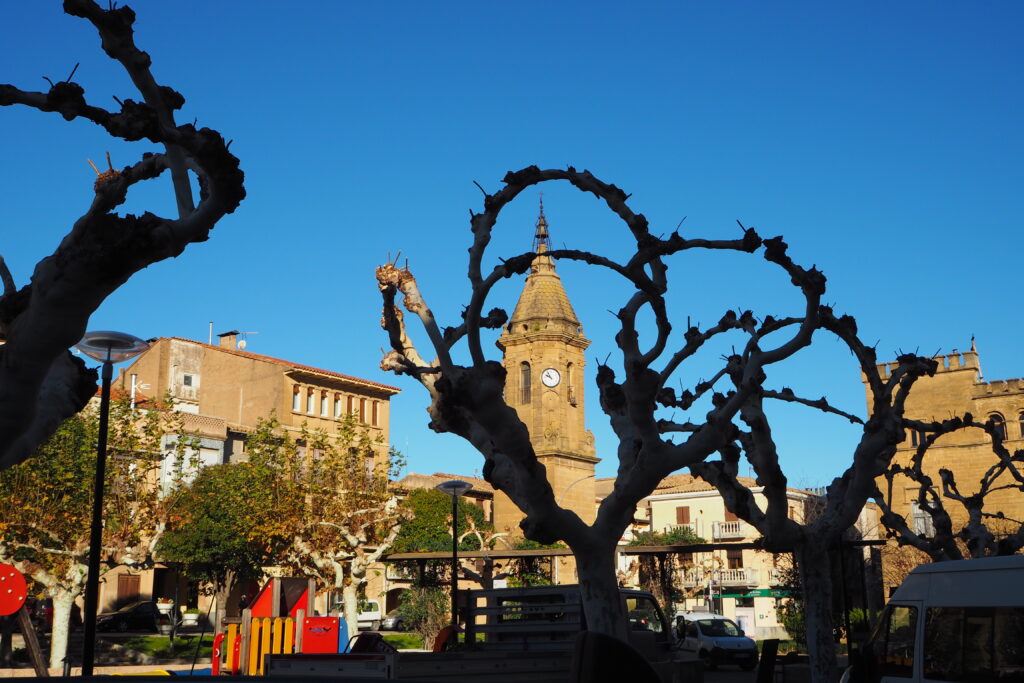
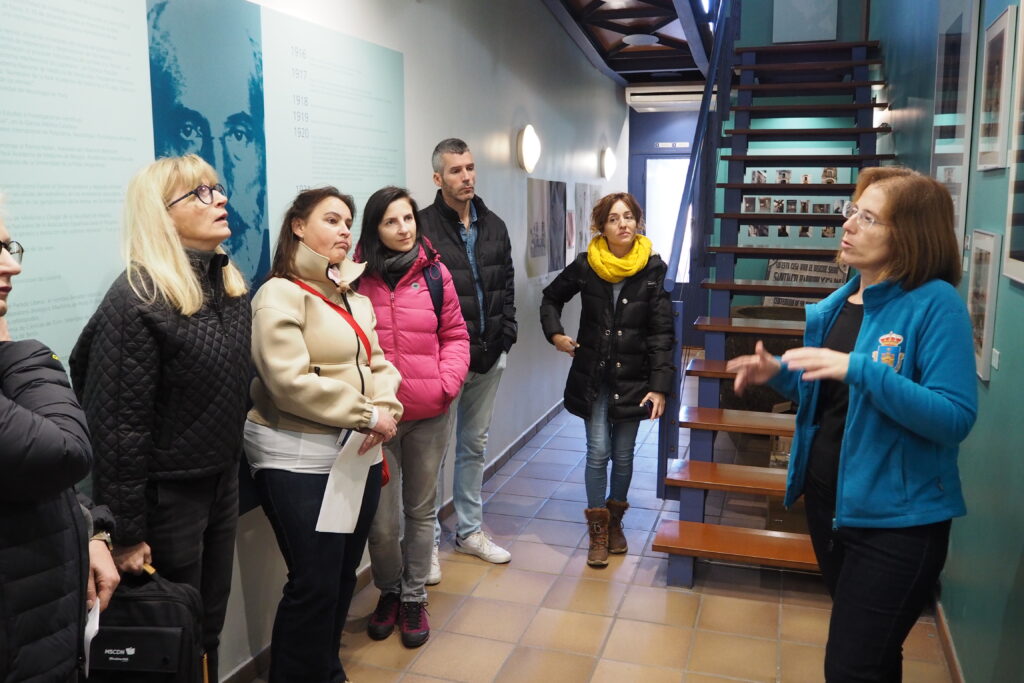
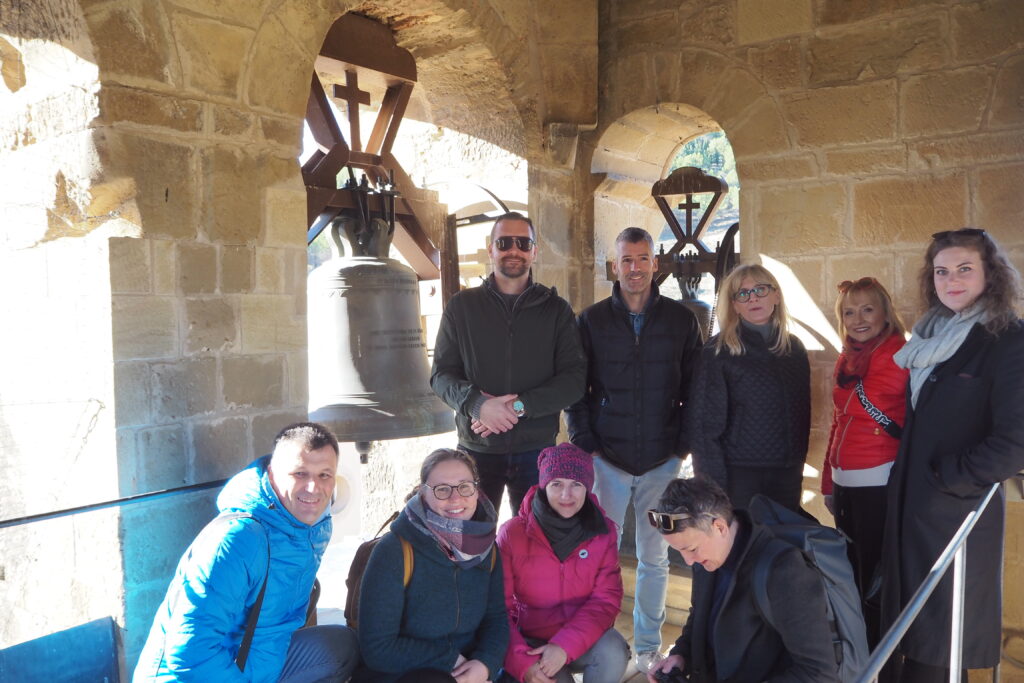
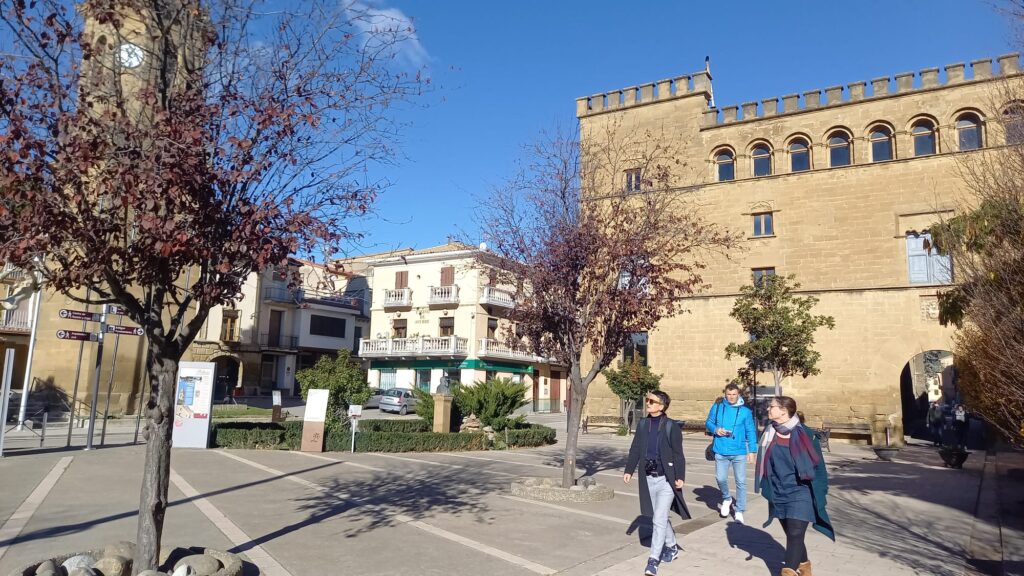
Następnie udaliśmy się do zamku Loarre, imponującej romańskiej twierdzy z XI wieku.
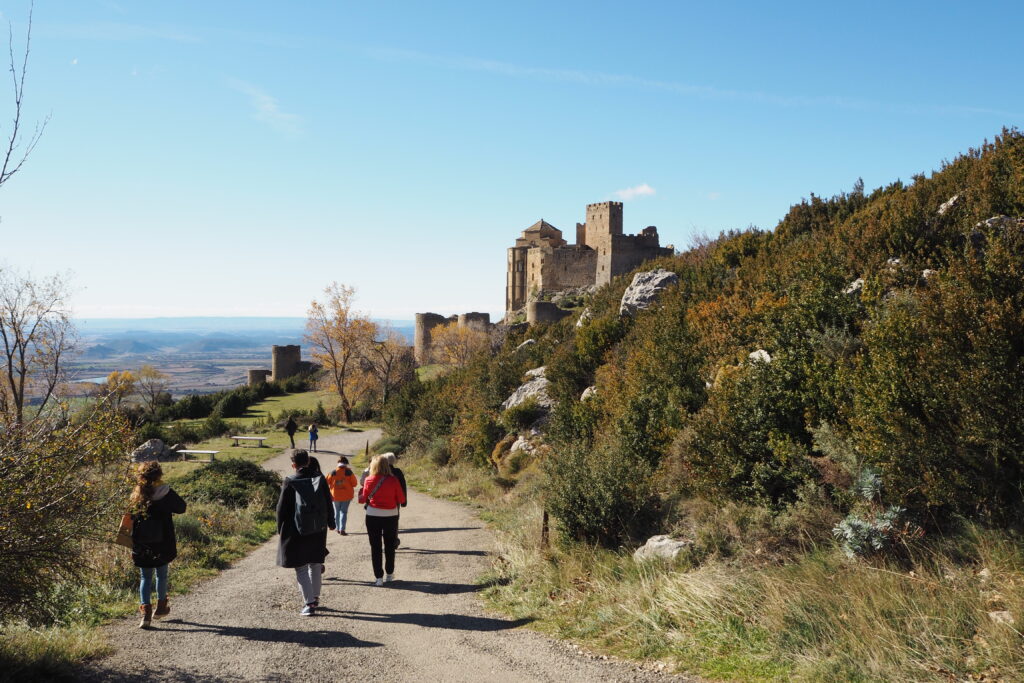
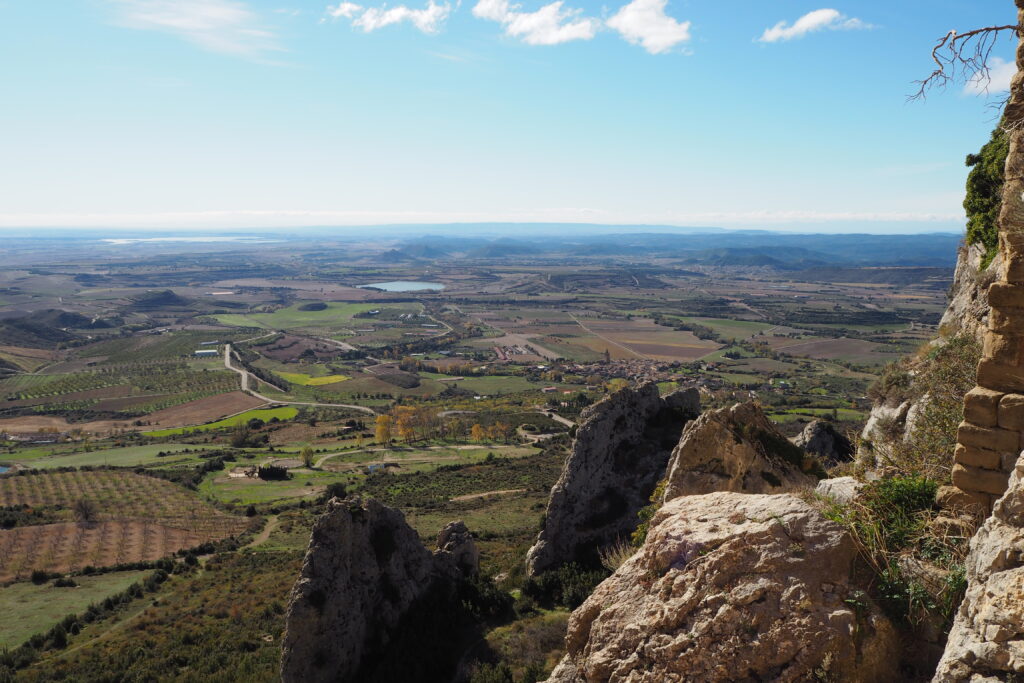

Po południu odwiedziliśmy CPEPA Miguel Hernández (Centro Público de Educación de Personas Adultas de Huesca) https://cpepamiguelhernandezhuesca.catedu.es/, gdzie mieliśmy okazję zapoznać się z działalnością centrum, realizowanymi projektami Erasmus+ oraz wziąć udział w lekcji angielskiego.
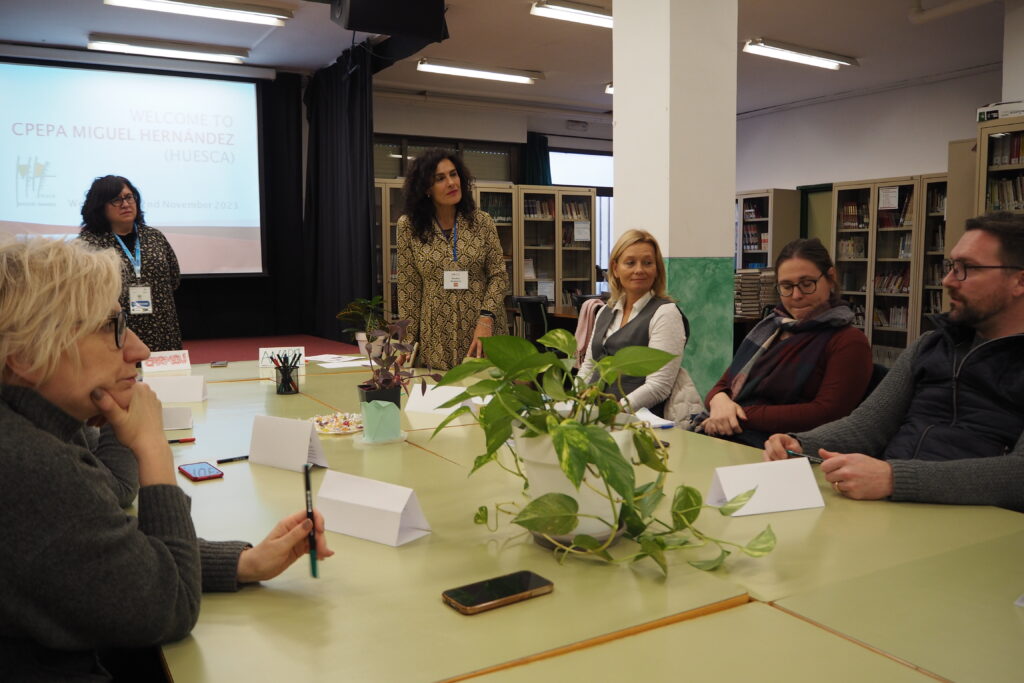
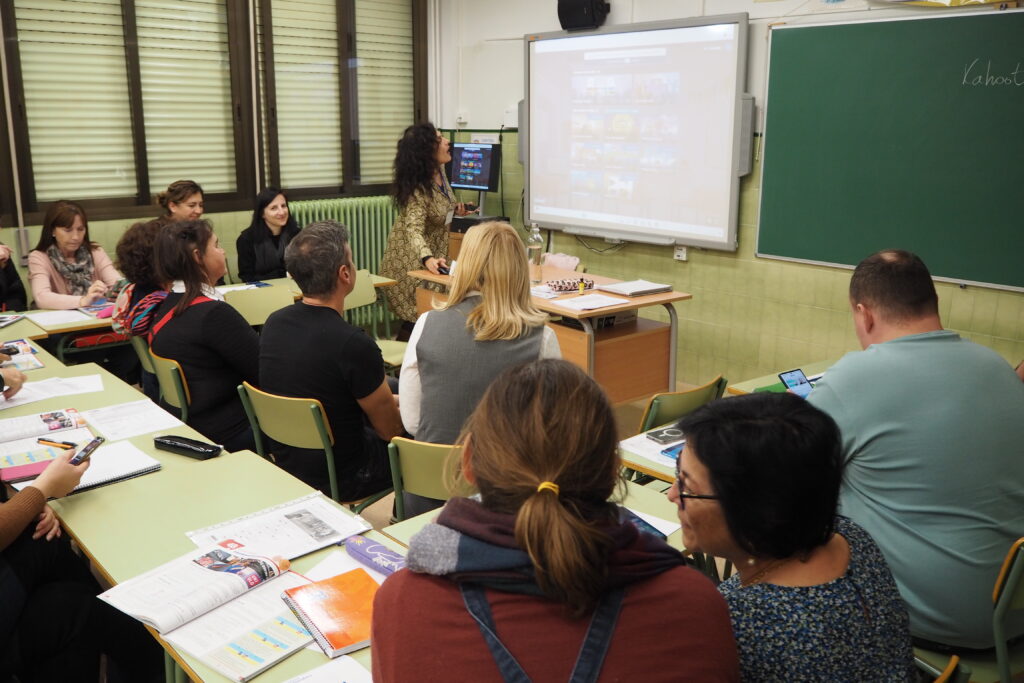

Następnie pochyliliśmy się nad szczegółową realizacją projektu, jego celami i oczekiwanymi rezultatami.
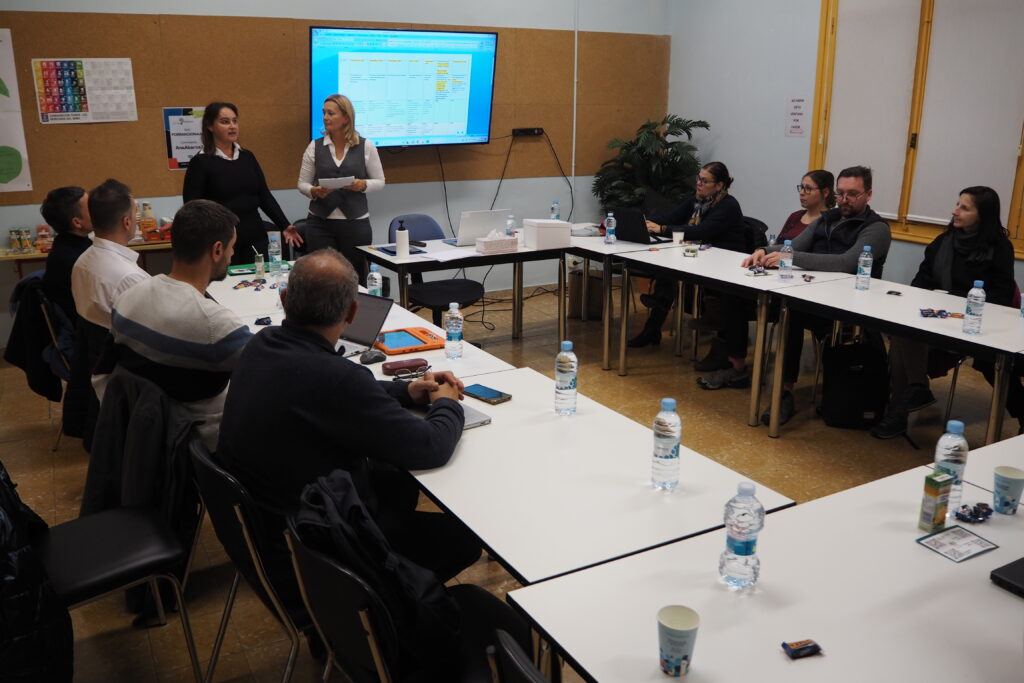
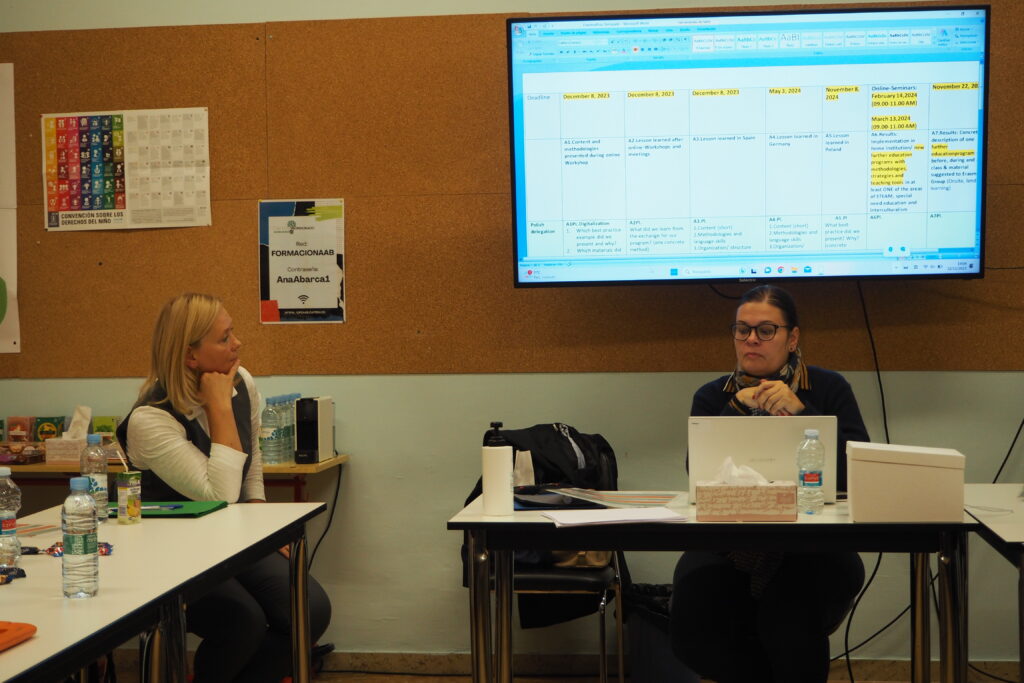
Dzień 4
Ostatni dzień w Huesce zaczęliśmy od wizyty w La escuela de Arte de Huesca https://escueladeartedehuesca.org/, której uczniowie są twórcami innowacyjnego projektu artystycznego Ojo Pajarico mającego na celu ochronę życia ptaków i różnorodności biologicznej.
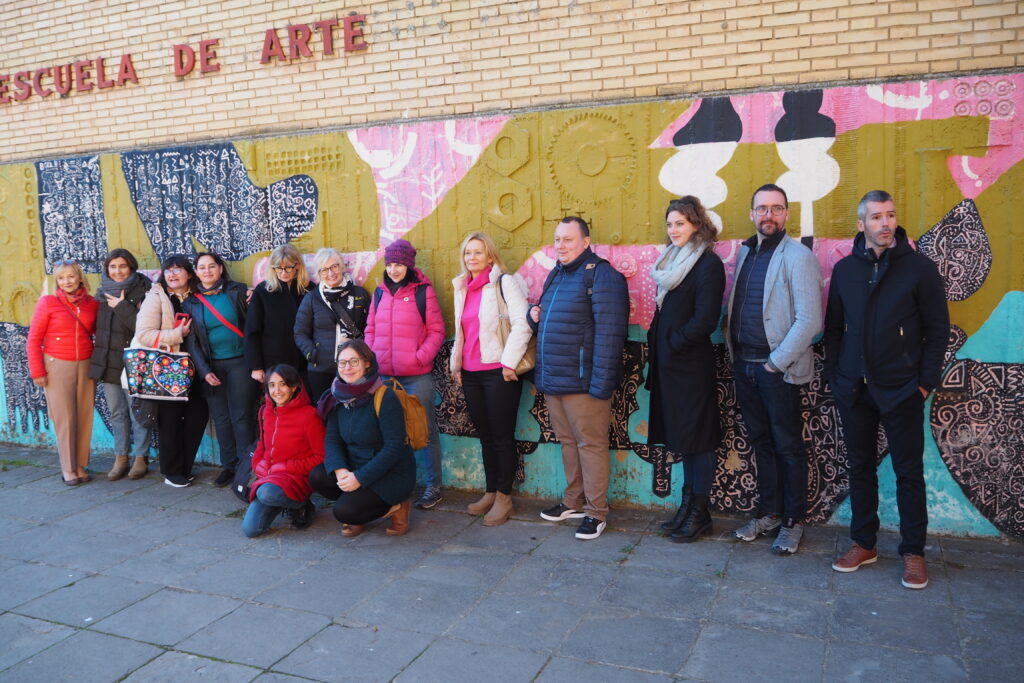
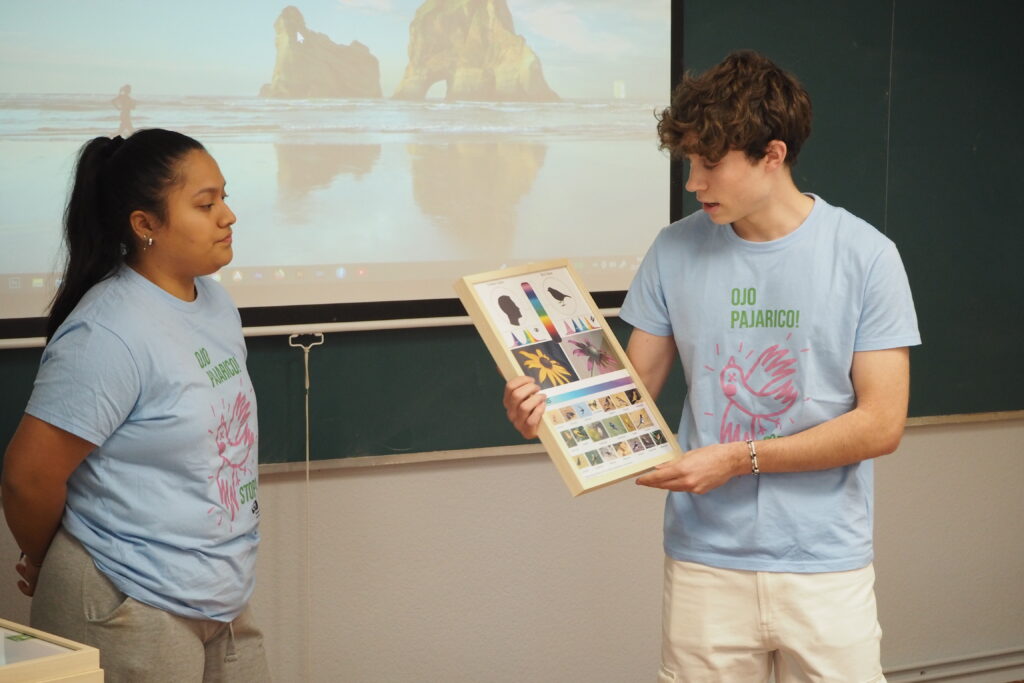
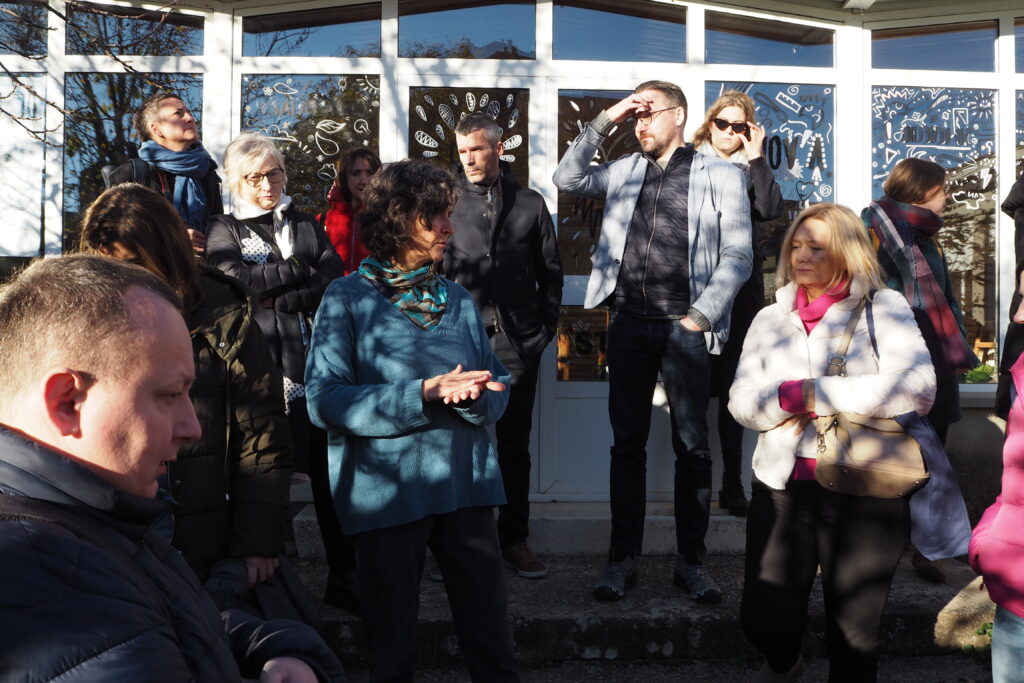
Następnie zwiedziliśmy Conservatorio Profesional de Música de Huesca https://www.conservatoriodehuesca.com/, gdzie zapoznaliśmy się ze strukturą kształcenia muzycznego w Hiszpanii.
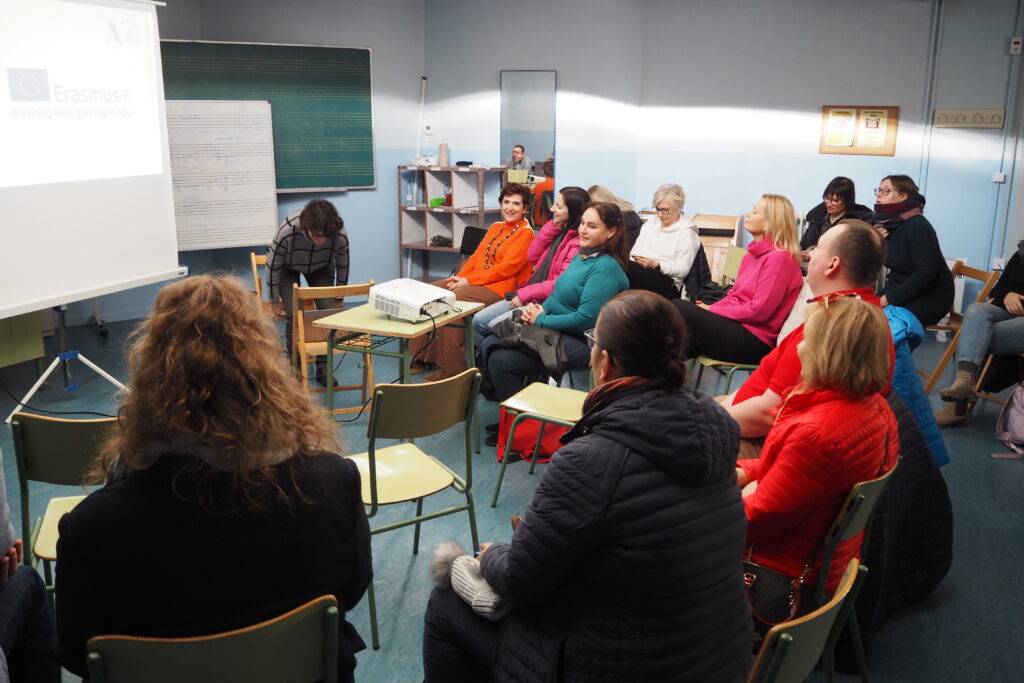
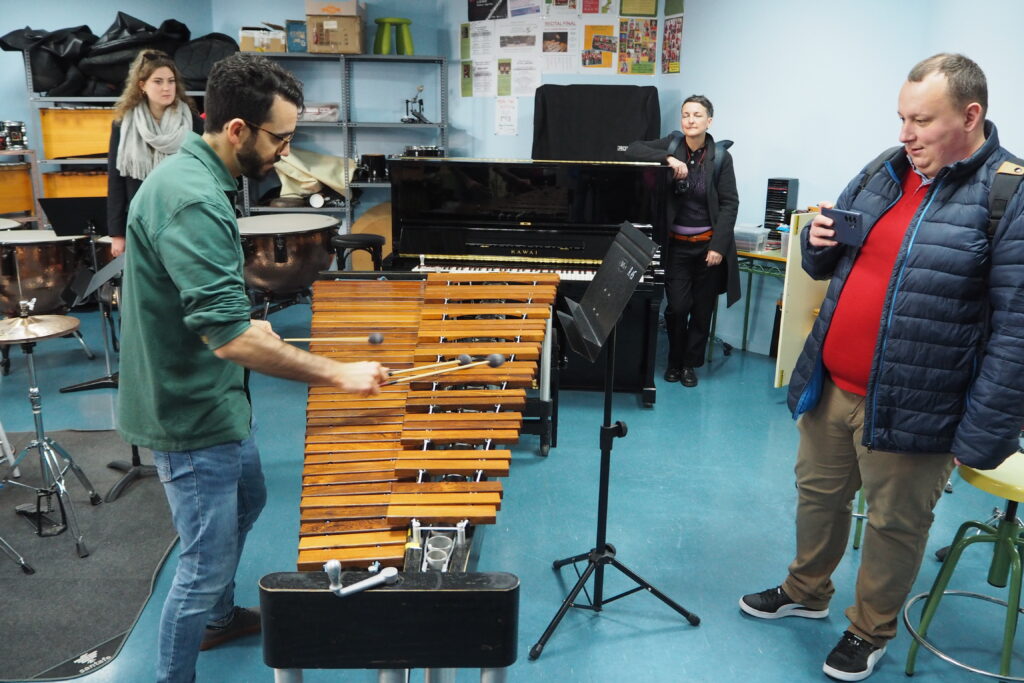
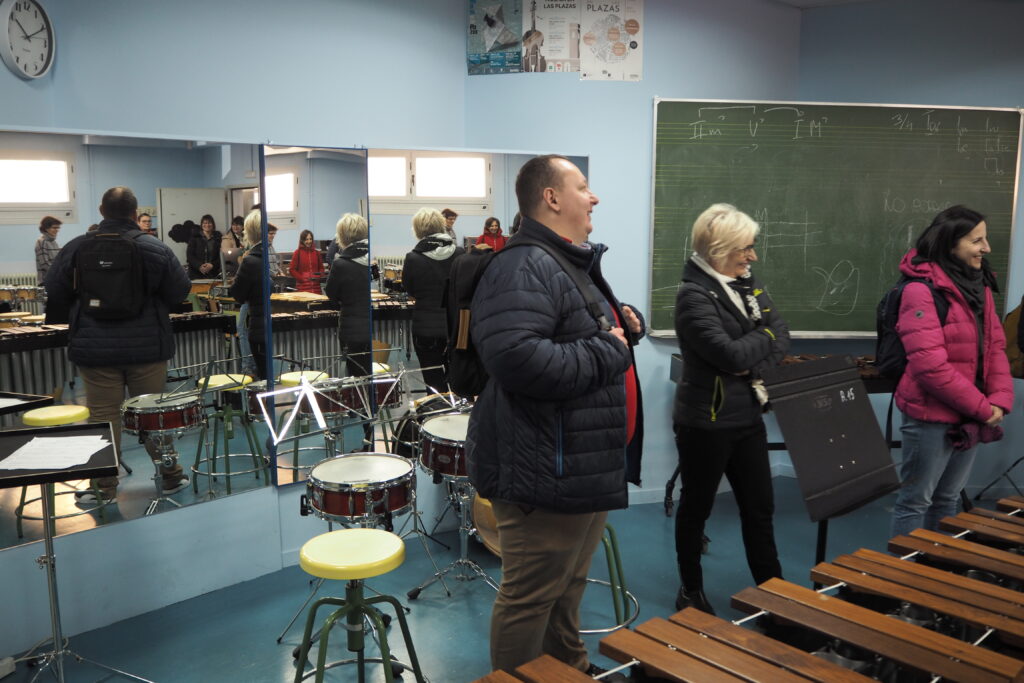
Wykorzystując metodę aktywizującej Placemat, wspólnie z partnerami z Hiszpanii i Niemiec zastanowiliśmy się, jakie elementy powinien zawierać program skutecznego szkolenia w trzech obszarach: STEAM, specjalne potrzeby edukacyjne, międzykulturowość. Głównym celem projektu jest bowiem poszerzenie oferty doskonalenia zawodowego nauczycieli w instytucjach partnerskich poprzez przygotowanie i wdrożenie programów kursów opracowanych z wykorzystaniem metodologii blended learning w tych trzech obszarach.
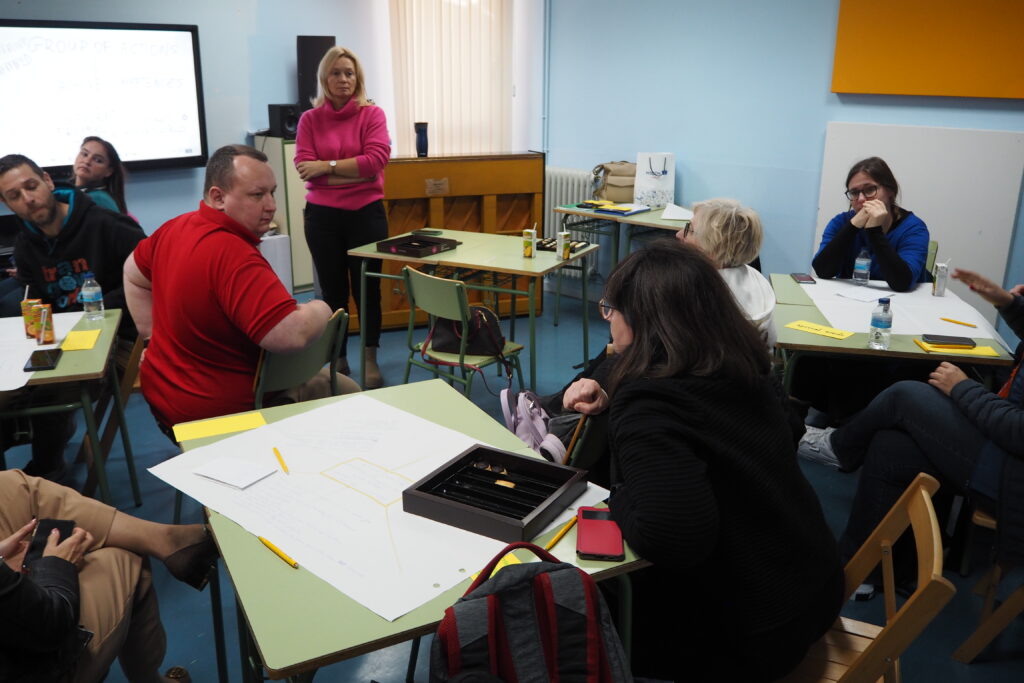
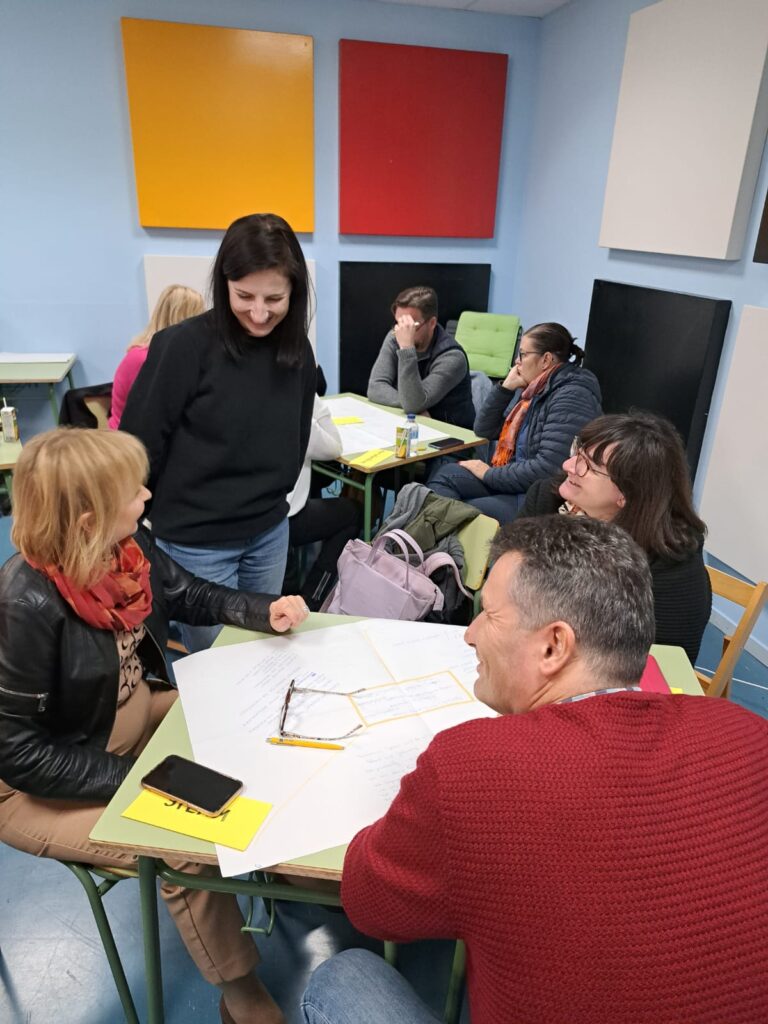
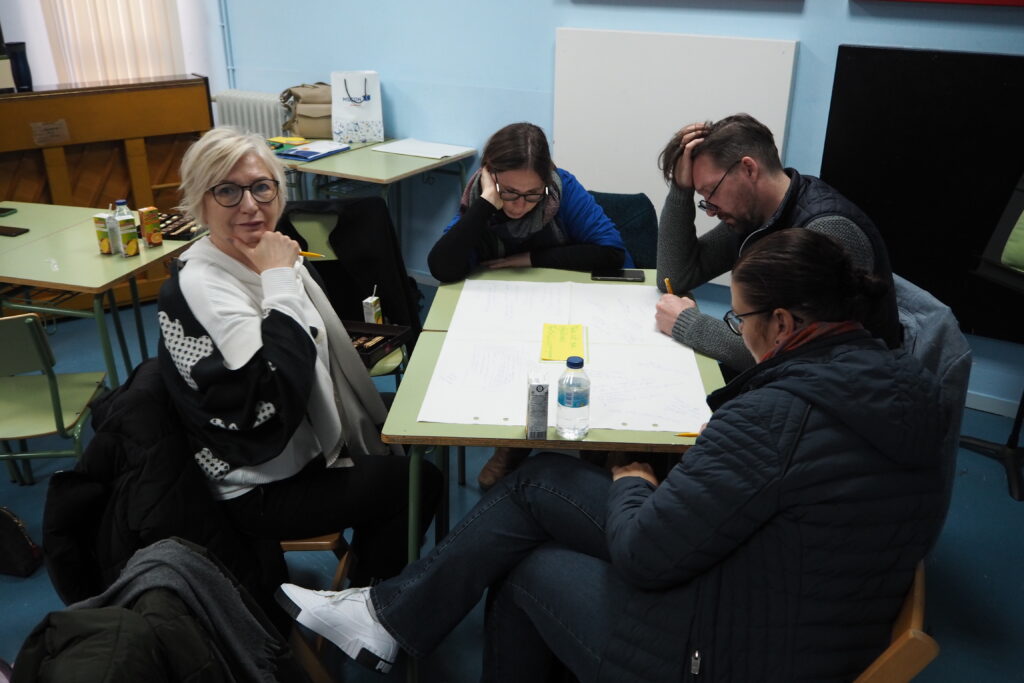
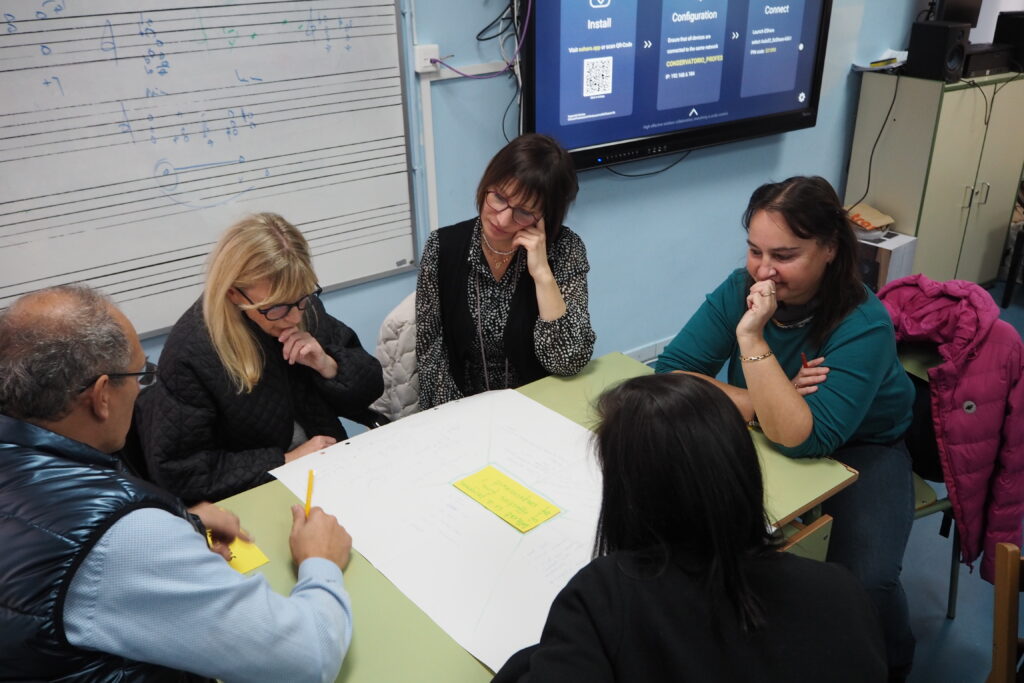
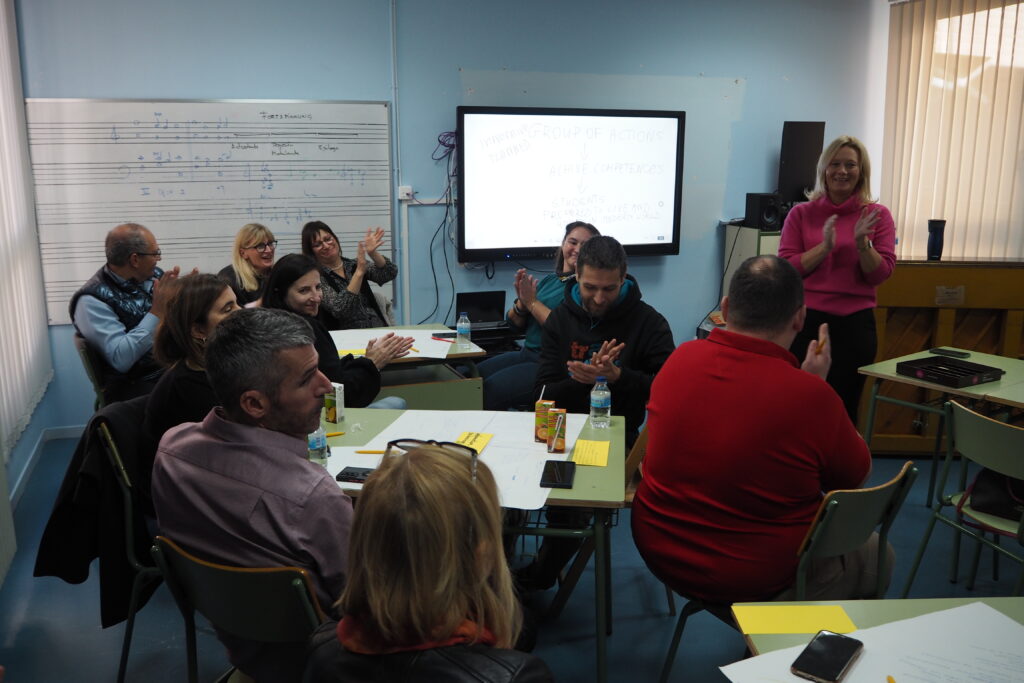
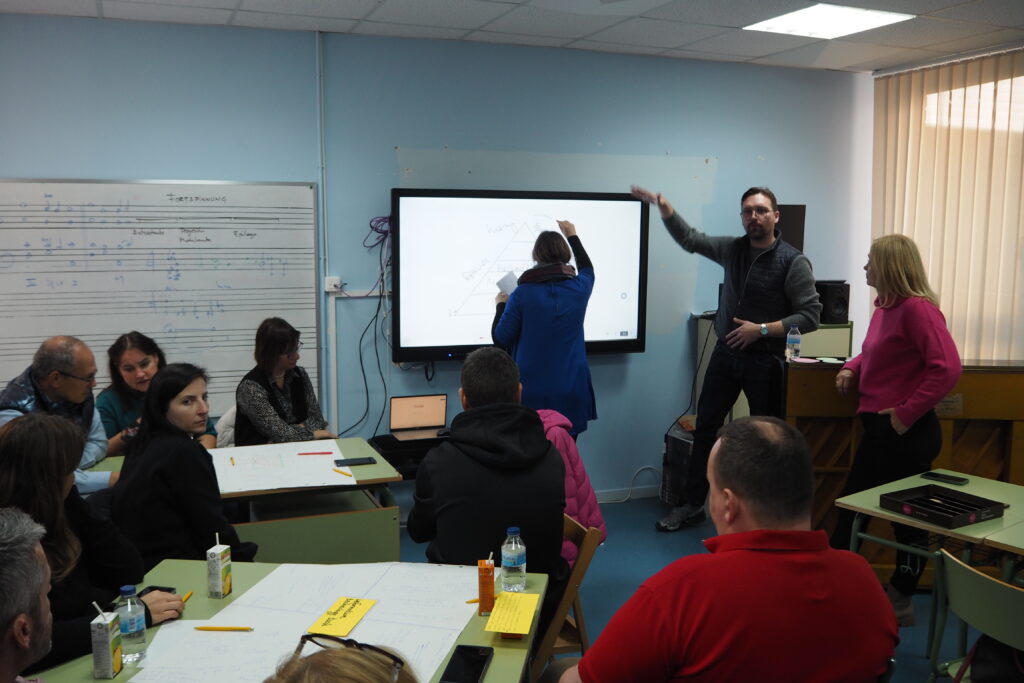
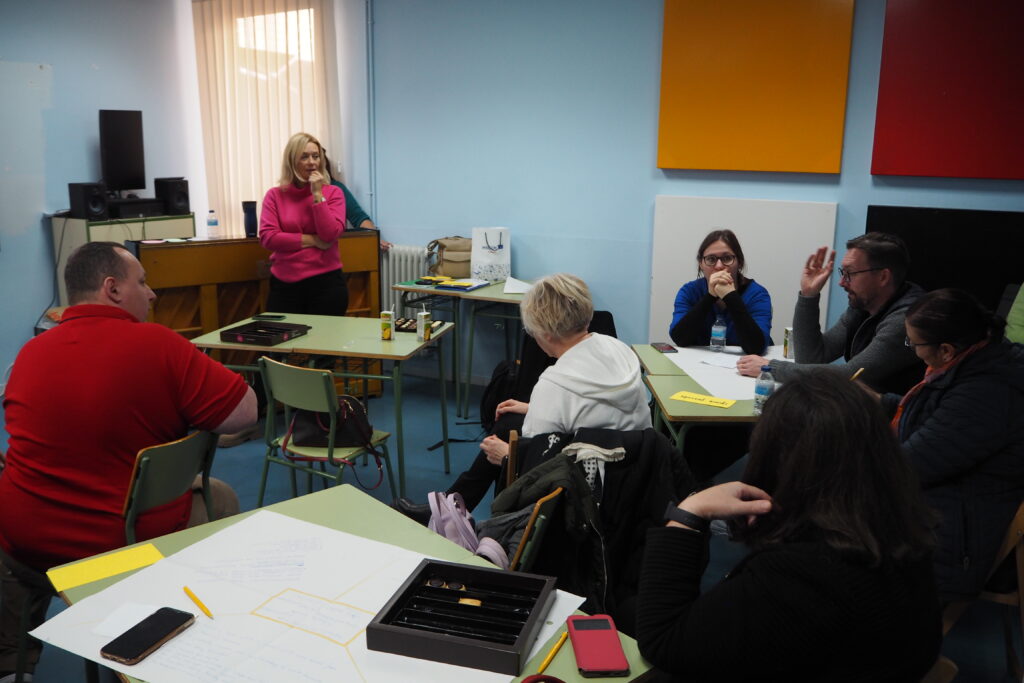
Ostatnią zwiedzaną przez nas szkołą był I.E.S. Ramón y Cajal https://ramonycajalhuesca.catedu.es/, najstarszy ośrodek szkolnictwa średniego w prowincji Huesca realizujący projekty STEAM i Erasmus+.
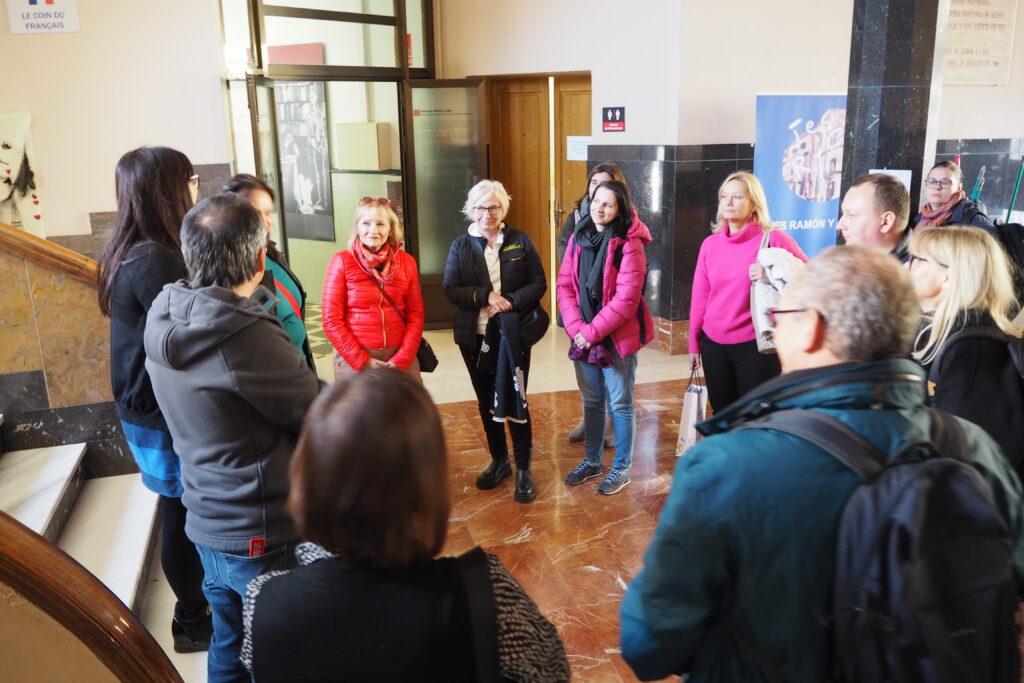
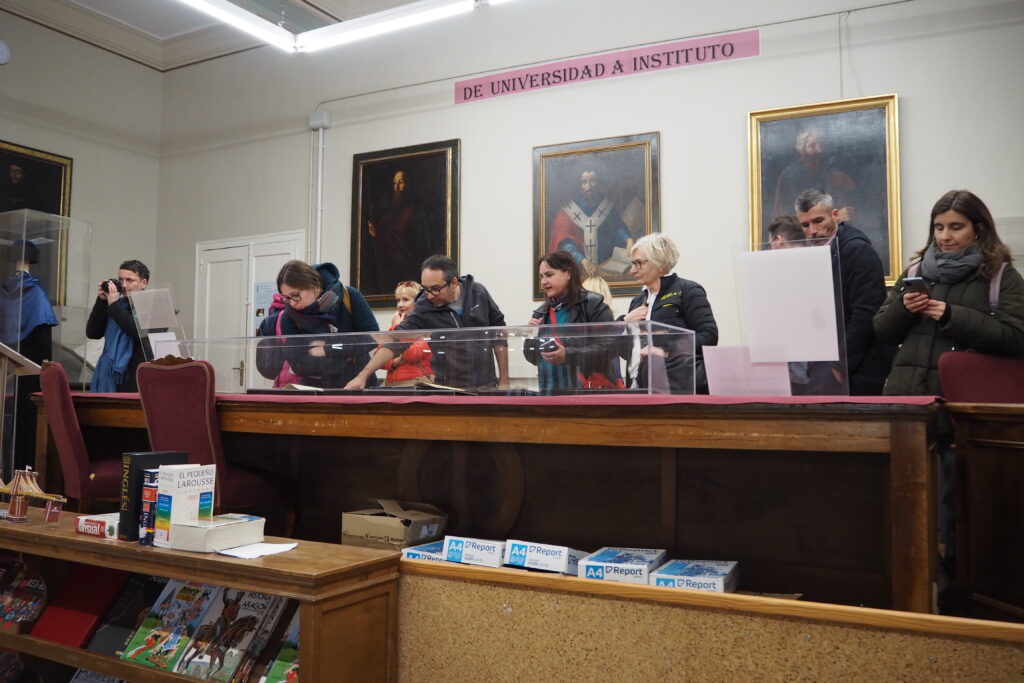
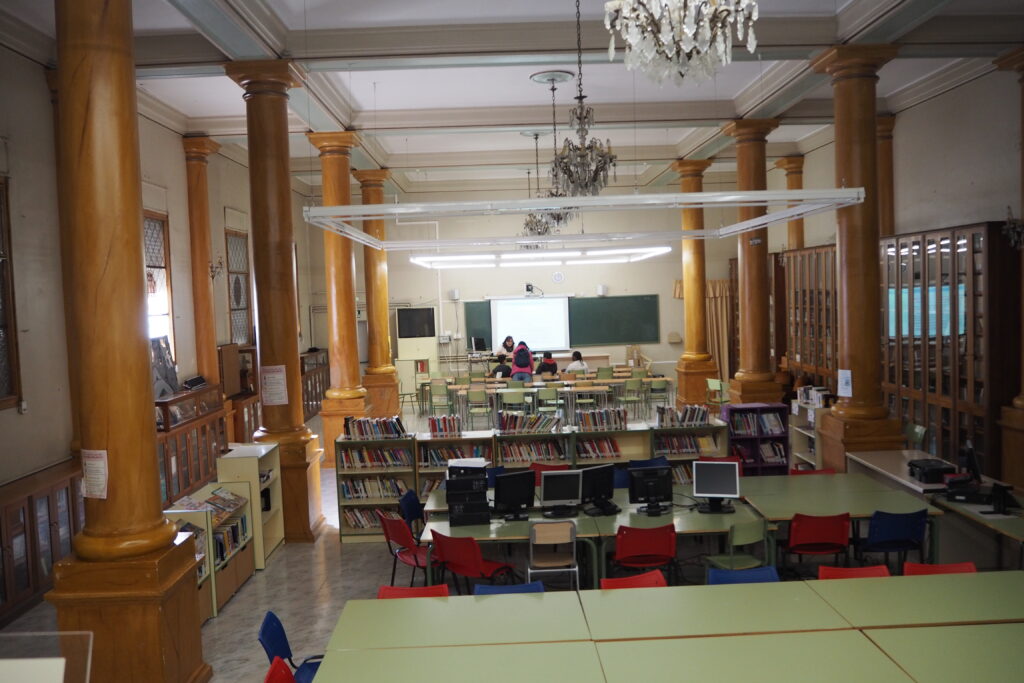
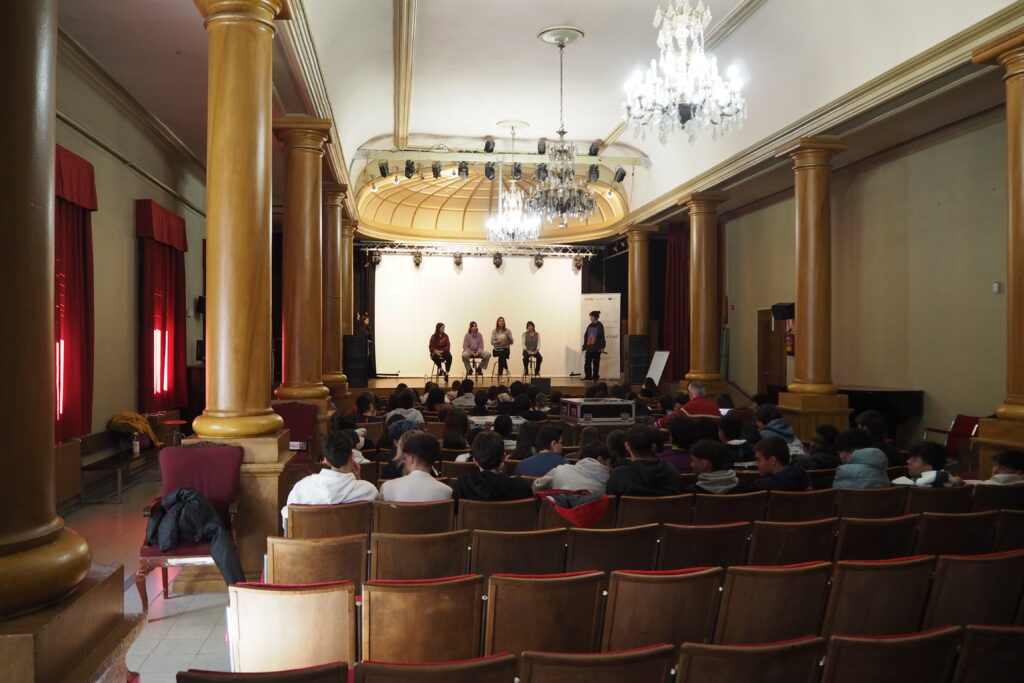
Po południu zwiedziliśmy Museo Pedagógico de Aragón, w którego bogatych zbiorach znajdują się tradycyjne gry i zabawki, podręczniki, meble i sprzęty szkolne z różnych epok.
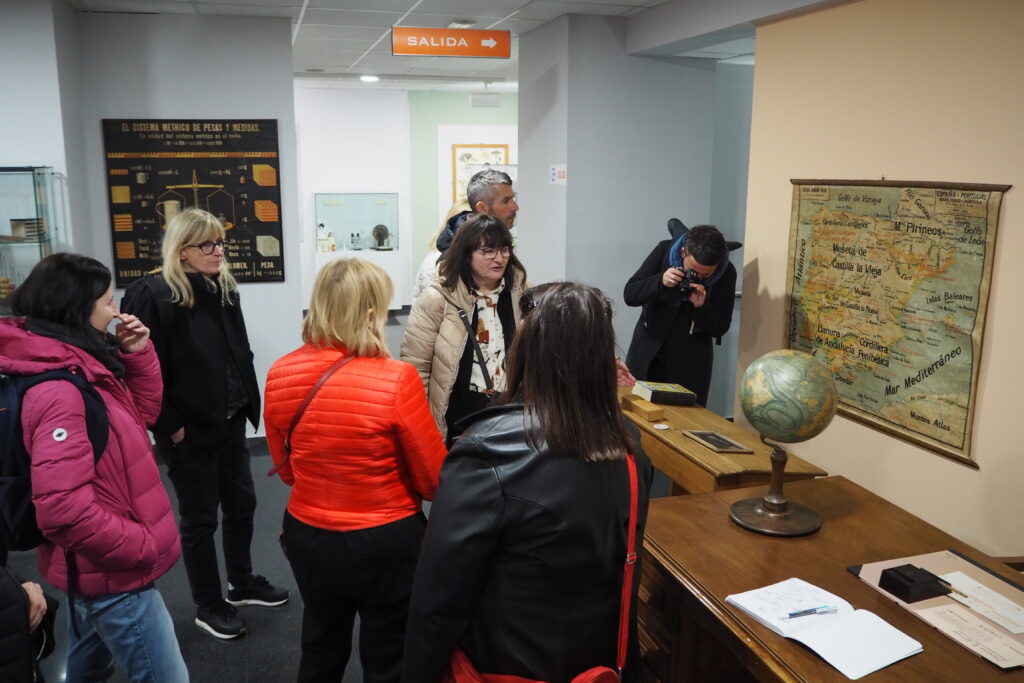
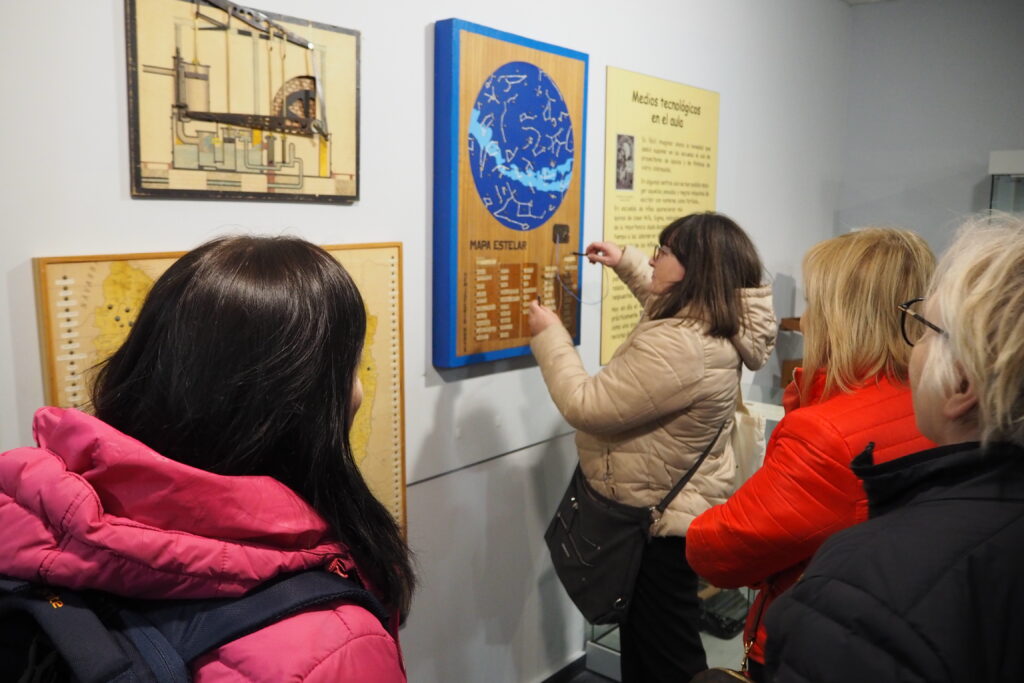
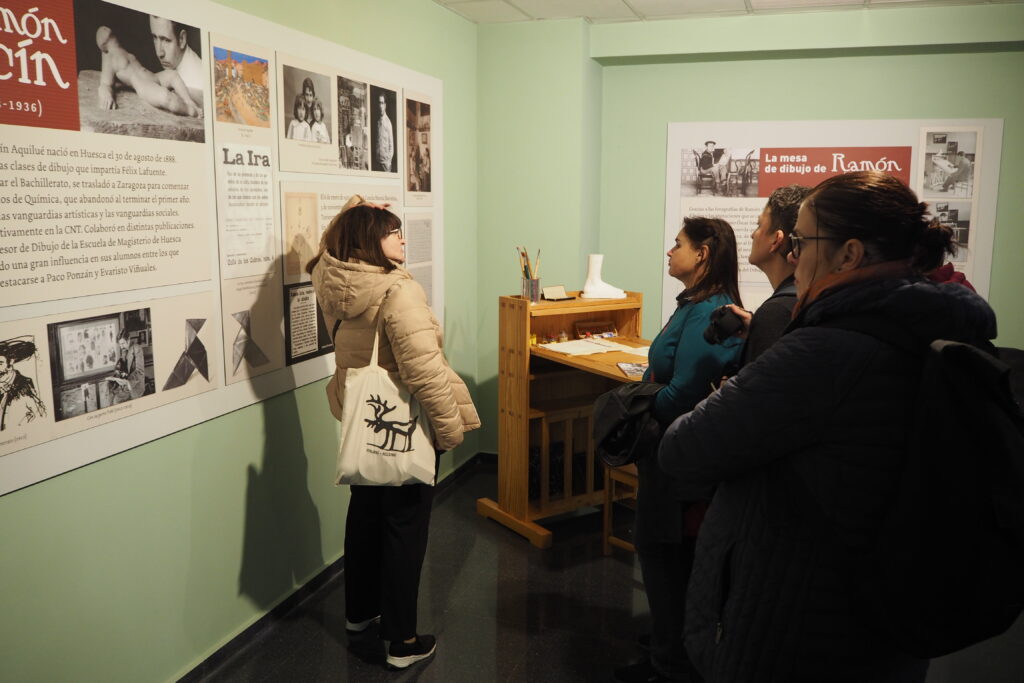
I na koniec dnia zakupy w La Confianza http://ultramarinoslaconfianza.com/, najstarszym nadal działającym sklepie w Hiszpanii.
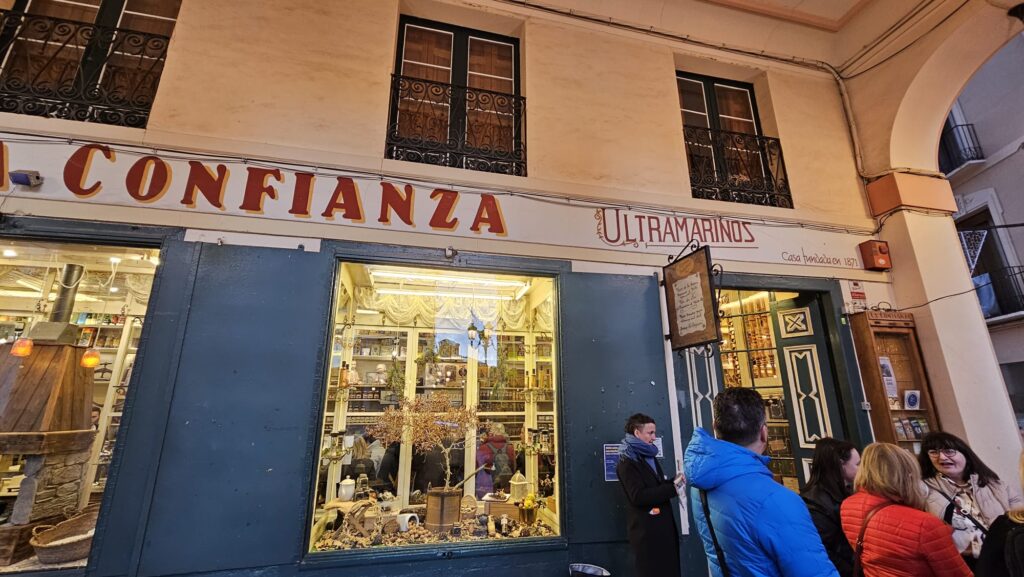
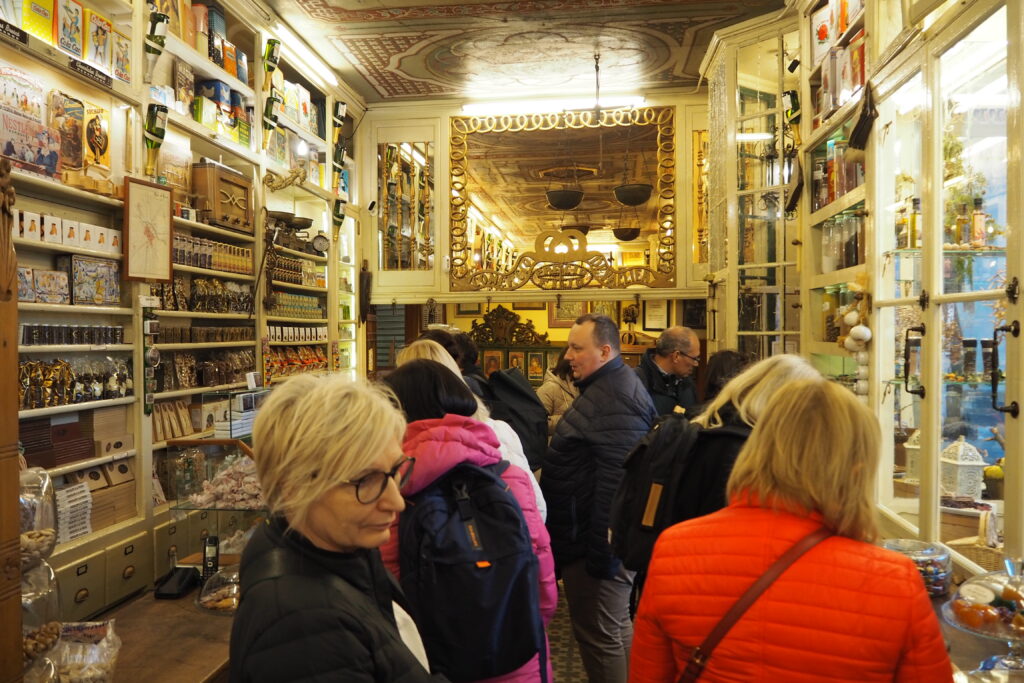
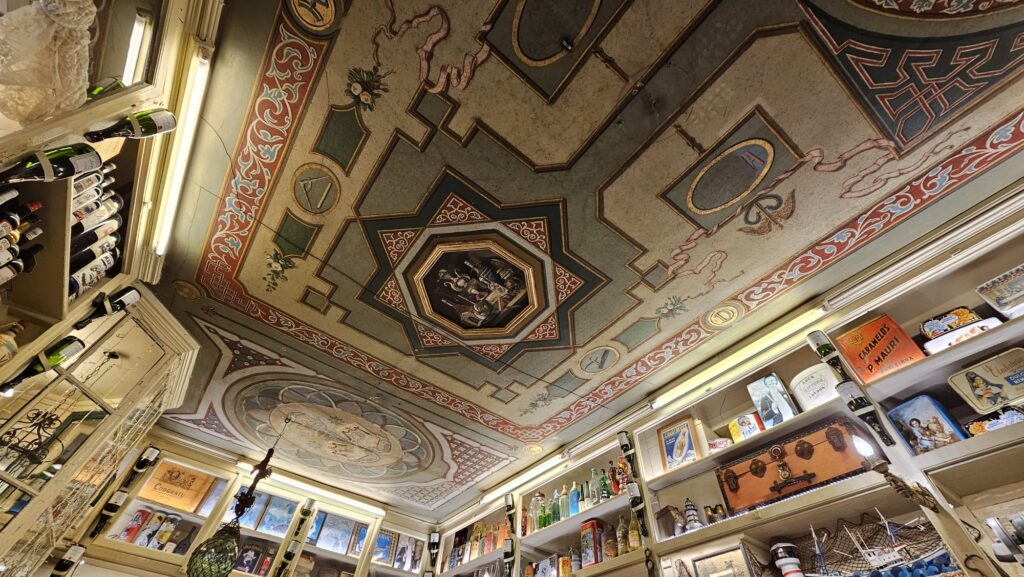
Dzień 5
Przed wylotem do Polski udało nam się spędzić kilka godzin w Barcelonie, zobaczyć najważniejsze atrakcje i pospacerować w jesiennym słońcu.
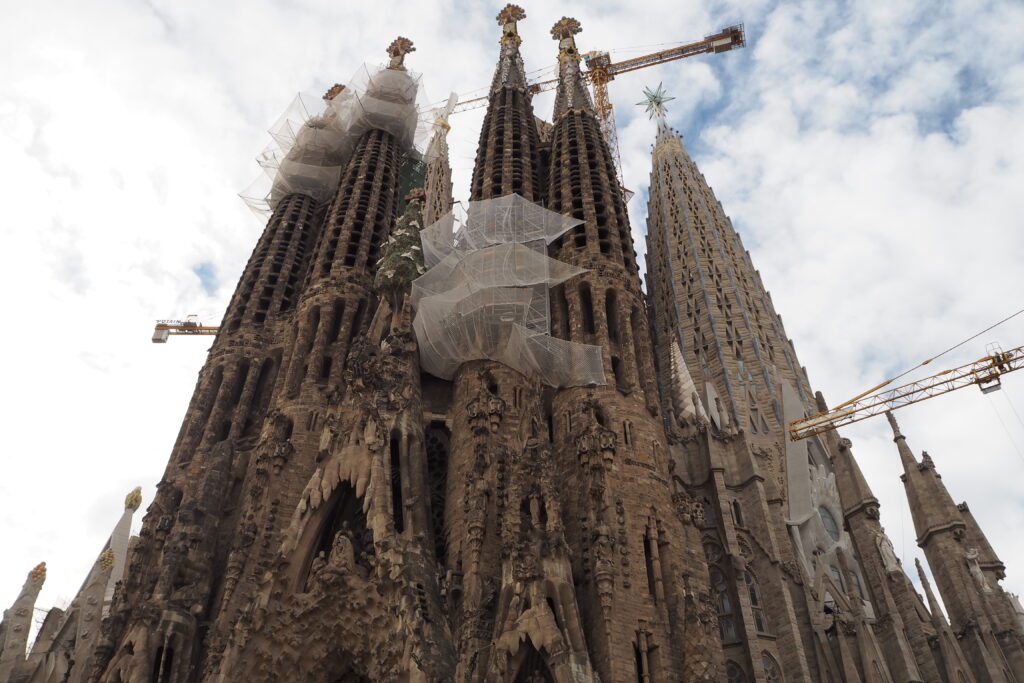
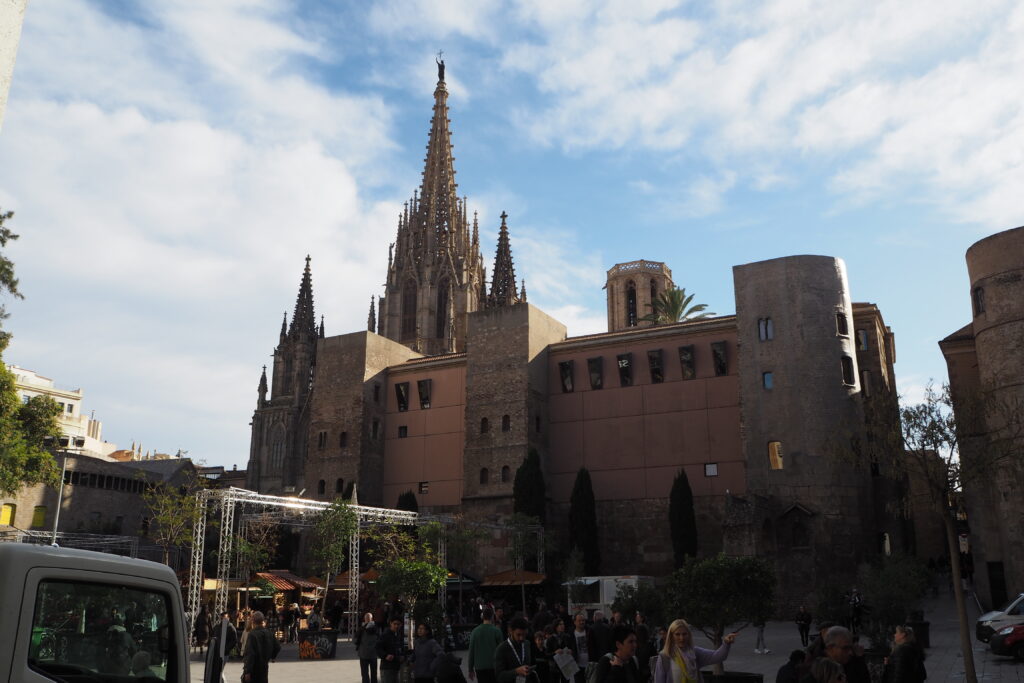
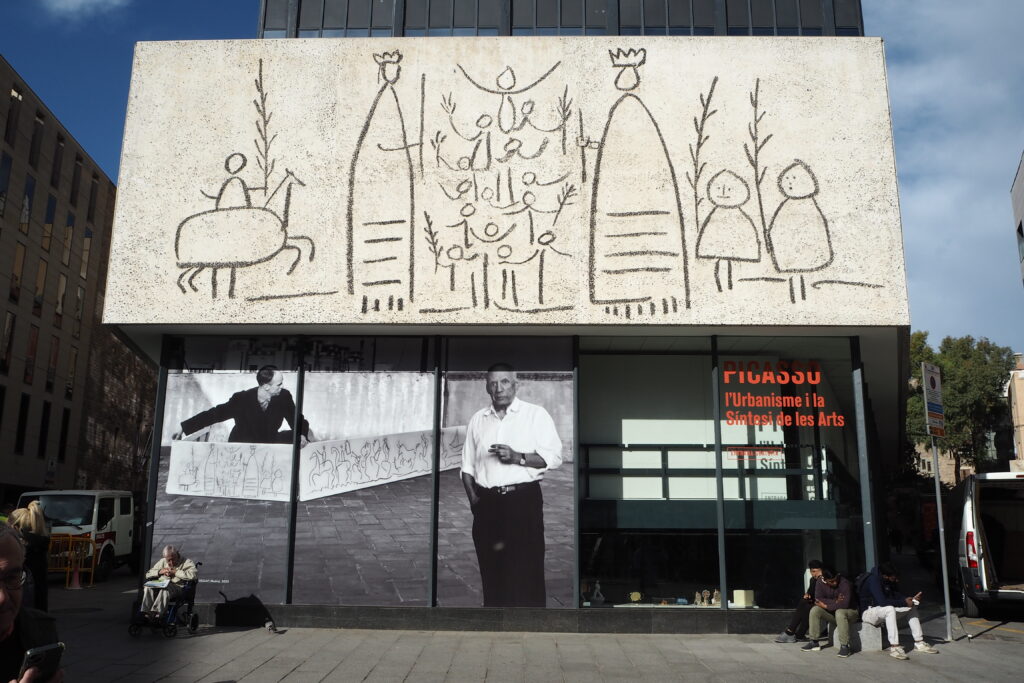
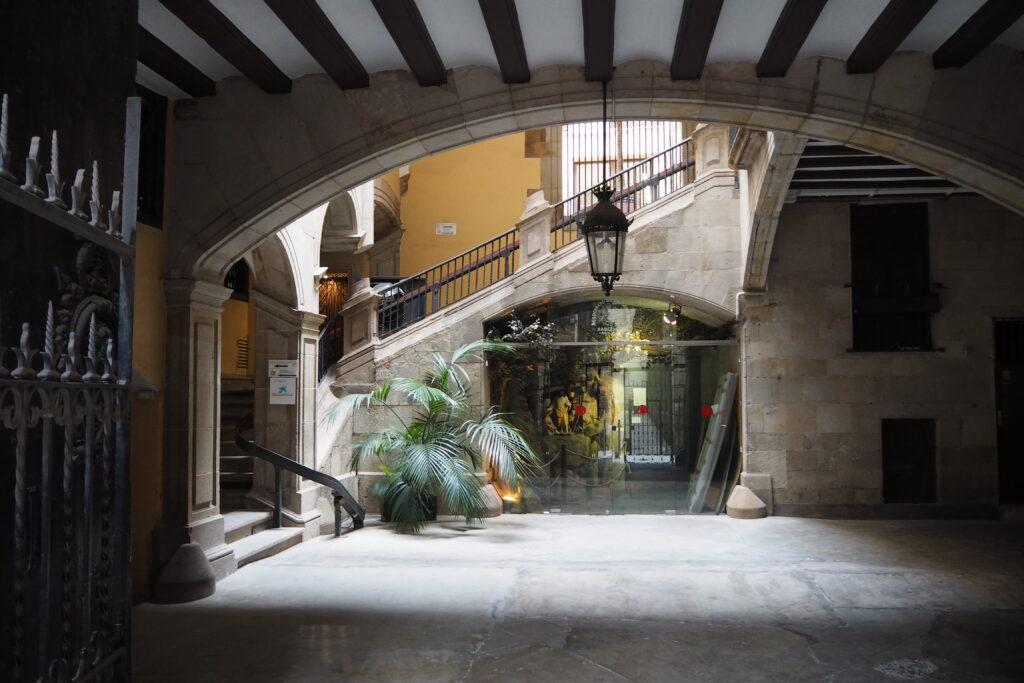
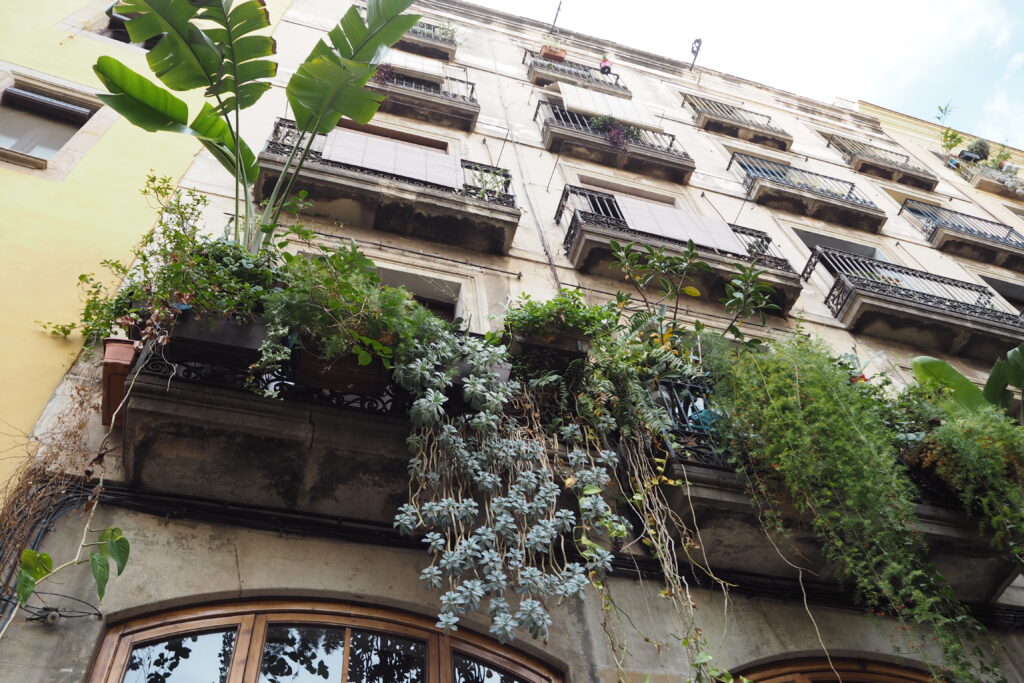
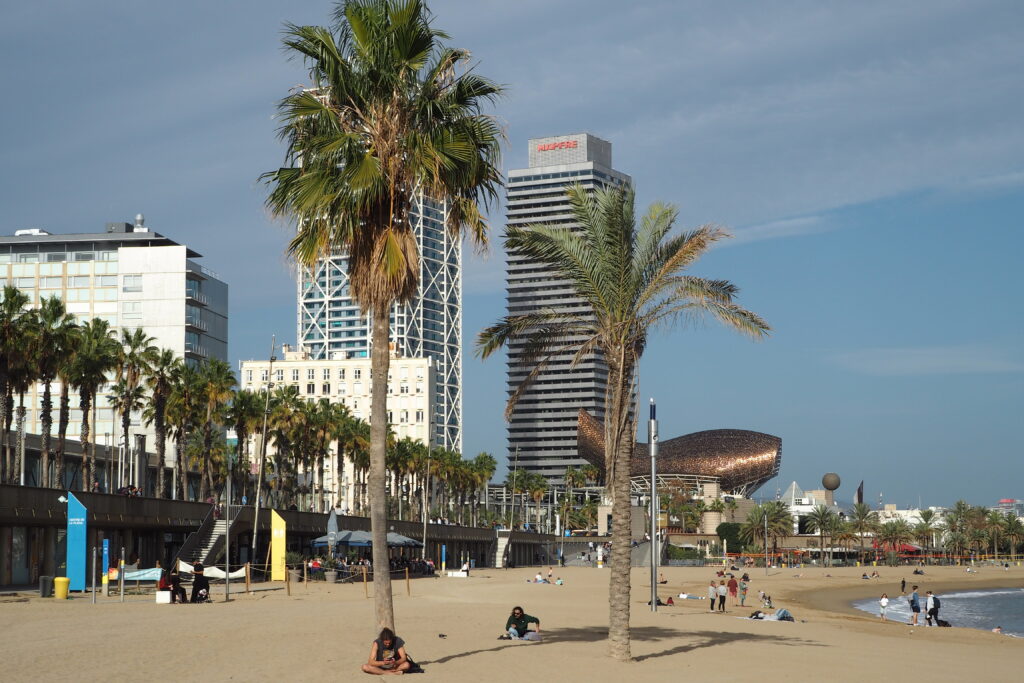
Wizyta w Hiszpanii i spotkanie z partnerami nie tylko wzbogaciła naszą wiedzę edukacyjną, napełniła nas entuzjazmem do dalszej współpracy, wymiany doświadczeń i odkrywania fascynujących obszarów edukacji, ale przede wszystkim zainspirowała do wypróbowania wybranych rozwiązań w naszej pracy.
20-24 November 2023 – Educational visit to Spain
We have begun the second phase of the project – educational mobility. The first of the three visits planned in the project took place in Huesca, Aragon. A team of eight employees from MSCDN met for the first time live with partners from Spain and Germany. The rich program of the visit allowed for the exchange of experiences and learning together in the area of organizing support for teachers and principals, looking at the work of teachers and learning about projects implemented in different types of educational institutions. Participants had also the opportunity to immerse themselves in the language and culture of the host country, visiting historical sites, learning about the local cuisine, traditions and the history of the city and region. Participation in the „Privilege walk” workshop exercise and using collaborative learning methods were an opportunity for conversations and discussions among all participants and fostered the development of communication skills in English.
Day 1
We were officially welcomed by the director of Centro de Profesorado de Huesca „Ana Abarca de Bolea” https://cifeaab.catedu.es/. We learned about the organizational structure of the institution, we met the staff and visited the building. Despite minor communication difficulties, the atmosphere was full of enthusiasm and willingness to cooperate.
During the workshop prepared by the representatives of the partner institution from Germany AGSA https://www.agsa.de/aktuelles.html we learned about the working techniques that promote the development of intercultural competence.
We met CARLEE’s representative (Centro Aragonés de Lenguas Extranjeras para la Educación) https://www.carleearagon.es/ and discussed possibilities for cooperation between our institutions in supporting language teachers.
We participated in a workshop on activation methods, particularly those that support collaborative learning, and new technologies in education.
Day 2
The next day we had the opportunity to visit local educational institutions.
CEIP Director Alcoraz https://colegioalcoraz.wixsite.com/inicio introduced us to the STEAM projects implemented at the school and showed us the spaces (Aula de las estrellas) where specialists work with students with autism spectrum disorders.
We then toured the vocational training facility El Instituto de Educación Secundaria Pirámide http://www.iespiramide.es/, which, in addition to preparing students for the high school diploma and vocational exam, implements a vocational special education programme.
At La Escuela Politécnica Superior de Huesca https://eps.unizar.es/, located next door, we had the opportunity to visit a library with a view of the mountains and a unique collection of seeds to borrow. We all left with a bag of seeds of a local basil variety.
In the afternoon we took a guided tour of Huesca. We learned about its most important monuments, history, traditions and the legend associated with it.
Day 3
The next day began with a visit to Ayerbe, the hometown of Santiago Ramón y Cajal, winner of the Nobel Prize in Medicine for his research on the structure of the nervous system.
We then headed to Loarre Castle, an impressive Romanesque fortress dating back to the 11th century.
In the afternoon, we visited CPEPA Miguel Hernández (Centro Público de Educación de Personas Adultas de Huesca) https://cpepamiguelhernandezhuesca.catedu.es/, where we had the opportunity to learn about the centre’s activities, the Erasmus+ projects underway, and take an English lesson.
We then leaned into the detailed implementation of the project, its goals and expected results.
Day 4
We began our last day in Huesca with a visit to La escuela de Arte de Huesca https://escueladeartedehuesca.org/, whose students are the creators of the innovative Ojo Pajarico art project aimed at protecting bird life and biodiversity.
We then visited the Conservatorio Profesional de Música de Huesca https://www.conservatoriodehuesca.com/, where we learned about the structure of music education in Spain.
Using the Placemat activation method, together with partners from Spain and Germany, we considered what elements a successful training programme should include in three areas: STEAM, special educational needs, and interculturalism. Indeed, the main goal of the project is to expand the offer of in-service training for teachers at partner institutions through the preparation and implementation of course programmes developed using the blended learning methodology in these three areas.
The last school we visited was I.E.S. Ramón y Cajal https://ramonycajalhuesca.catedu.es/, the oldest secondary education centre in the province of Huesca implementing STEAM and Erasmus+ projects.
In the afternoon, we visited the Museo Pedagógico de Aragón, whose rich collections include traditional games and toys, textbooks, furniture and school equipment from different eras.
And at the end of the day, we shopped at La Confianza http://ultramarinoslaconfianza.com/, the oldest store still in operation in Spain.
Day 5
Before flying to Poland, we managed to spend a few hours in Barcelona, seeing the highlights and taking a stroll in the autumn sunshine.
The visit to Spain and the meeting with partners not only enriched our educational knowledge, filled us with enthusiasm for further cooperation, exchange of experiences and exploring fascinating areas of education, but above all inspired us to try out selected solutions in our work.

